Stay Longer, Stay Remoter: Mashatu Safari
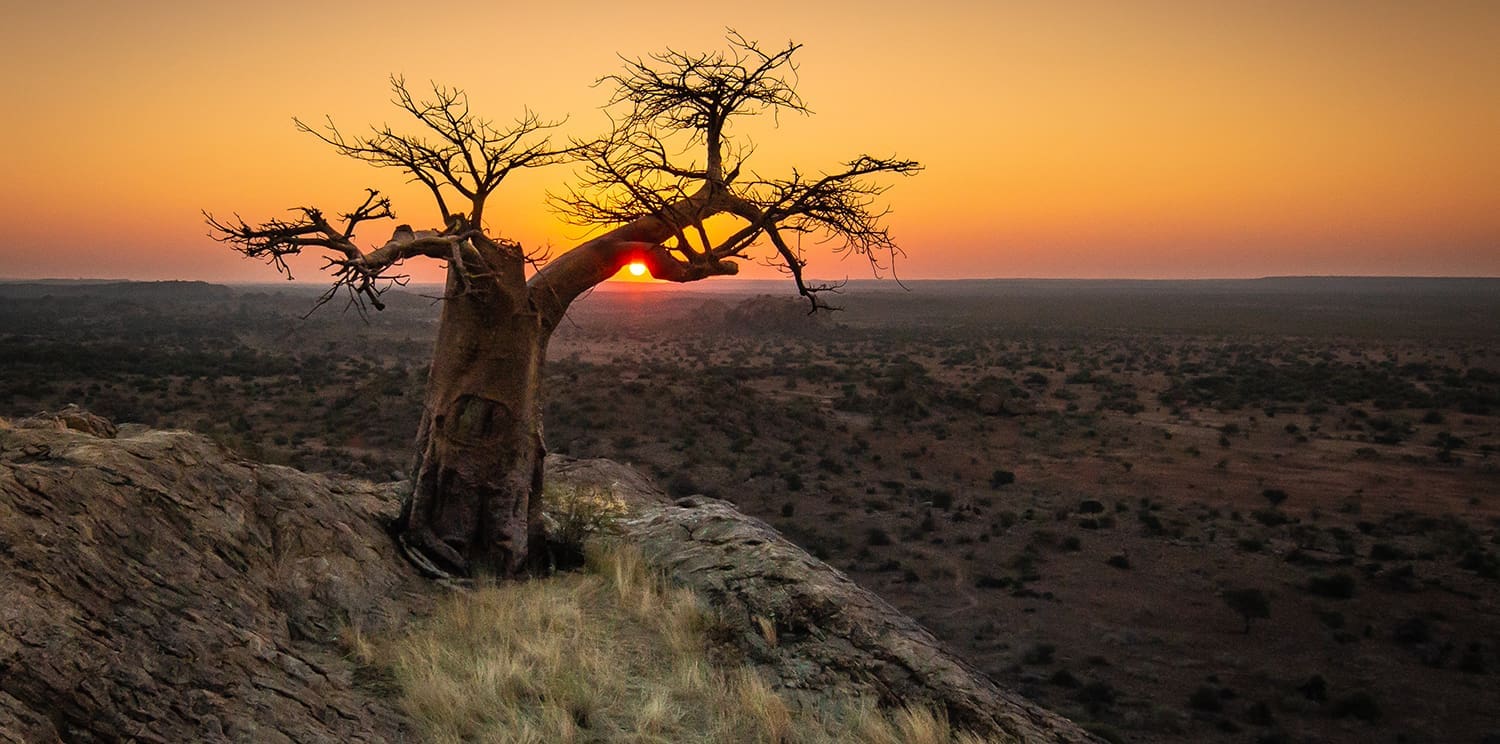
Nestled in Botswana’s easternmost point, Mashatu Game Reserve lies at the confluence of the Limpopo and Shashe Rivers. The landscape is a mix of open plains, grassland, riverine forests, rocky hills, marshland, and majestic sandstone ridges that are unlike anything else in Botswana. This reserve’s unique combination of year-round fresh water availability and an acutely-arid climate have combined to create one of Africa’s best wildlife areas – and best-kept secrets!
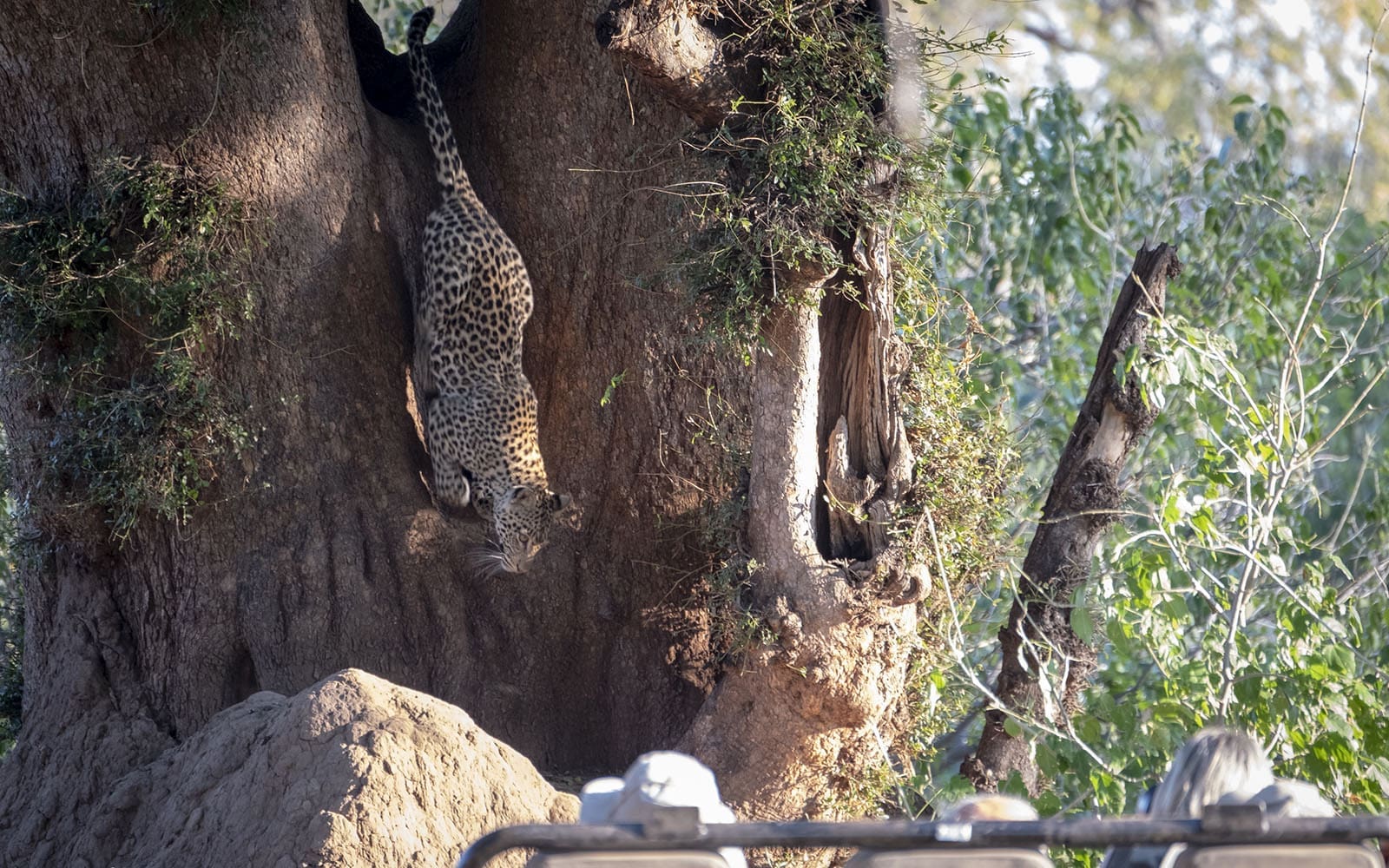
When in riverine forest, keep your eyes peeled for leopards!
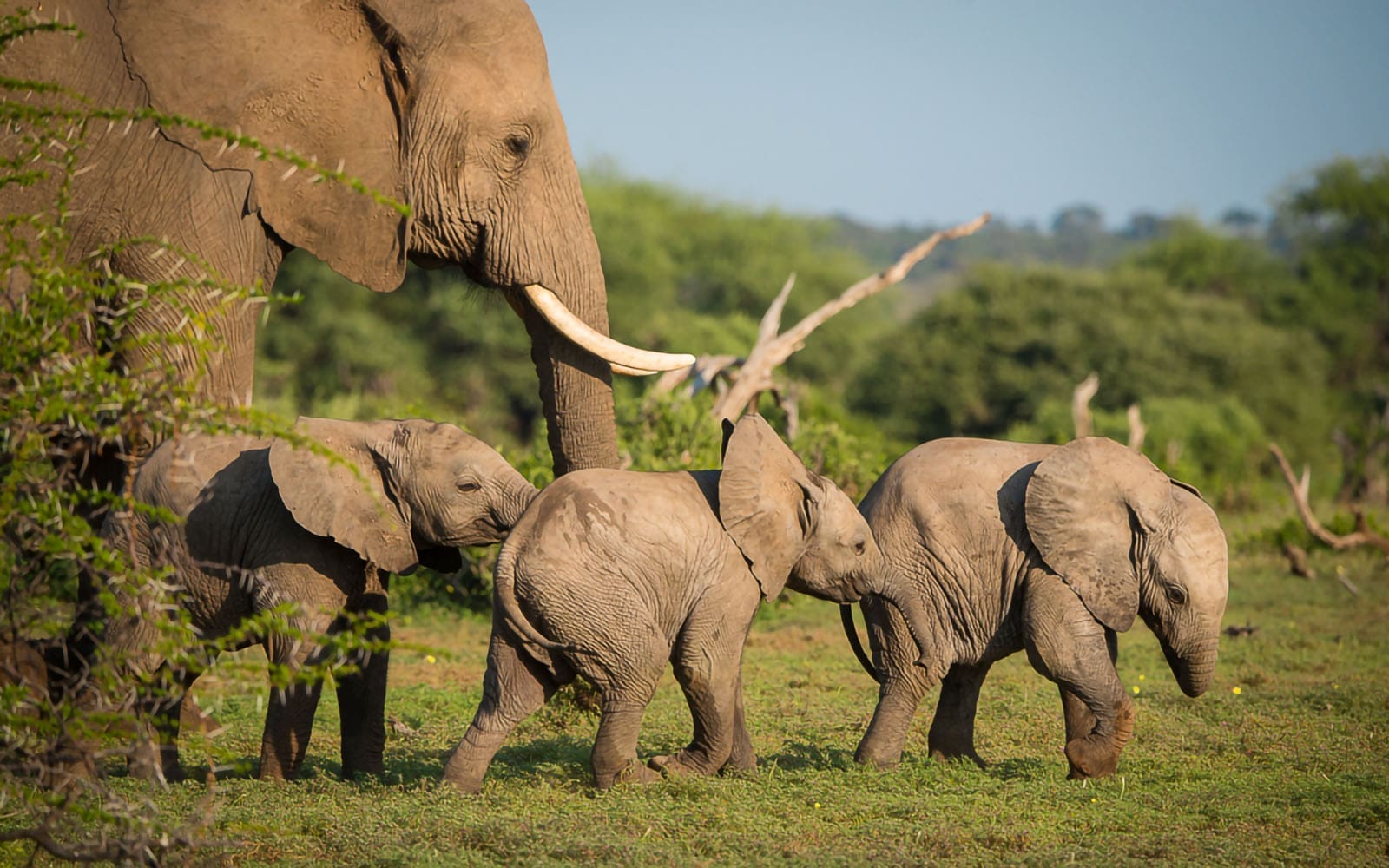
No private concession in Africa has a higher elephant concentration than Mashatu – adorable calves are seen often!
In regards to wildlife, Mashatu is home to an impressively large concentration of elephants – including plenty of adorable babies! It’s also one of Africa’s best wildlife areas to see lions and leopard. Other iconic animal species include giraffe, ostrich, eland, spotted (and brown) hyena, impala, jackal, cheetah, zebra, hippo, crocodile and African wild dog. Several unique species inhabit Mashatu as well, like the aardwolf, aardvark, honey badger, bat-eared fox, among others.
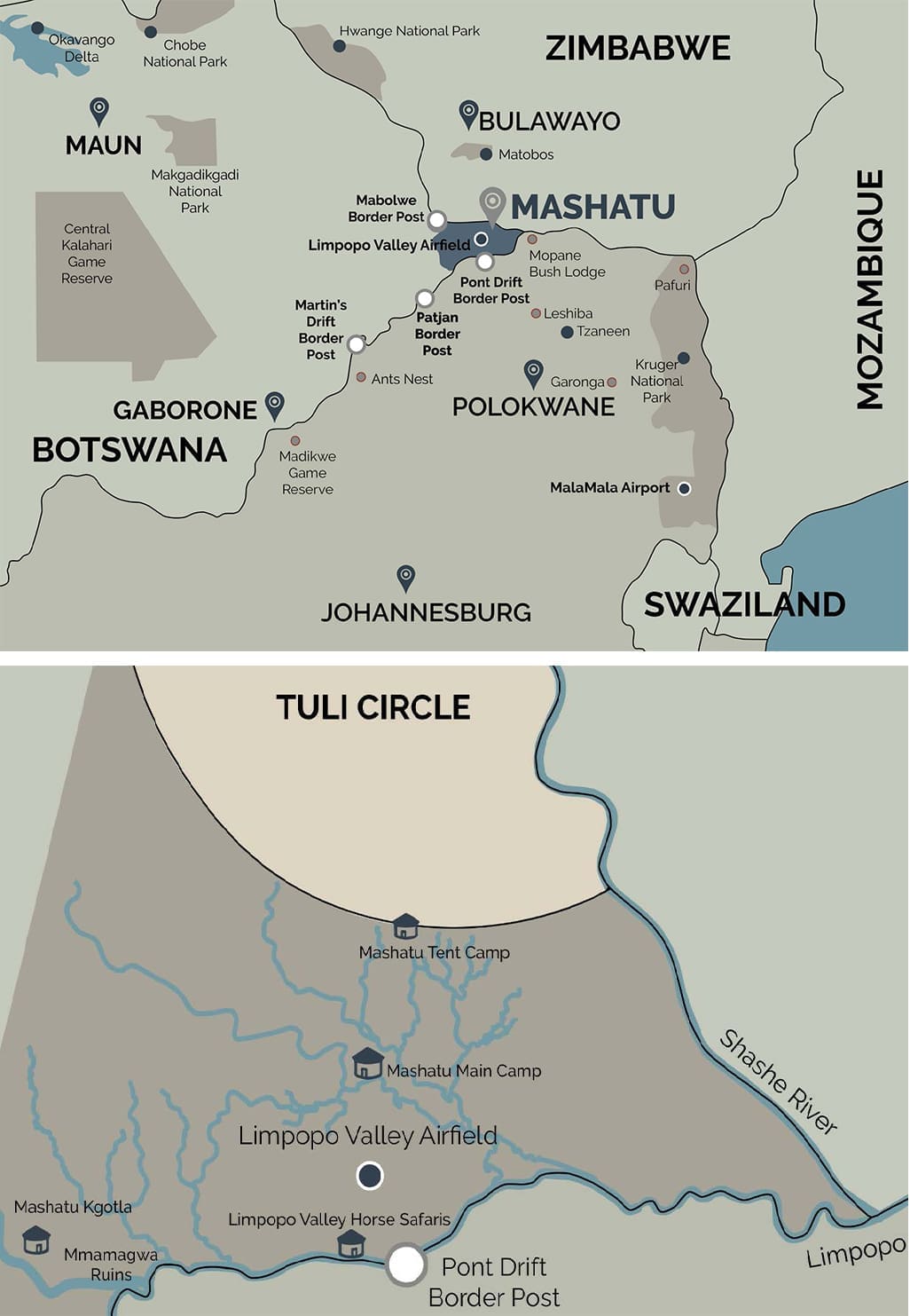
Mashatu’s location within Southern Africa; location of Mashatu’s properties
The four reasons AAC so highly recommends a Mashatu safari are:
- Mashatu Game Reserve is far removed from the high traffic of Northern Botswana. Furthermore, Mashatu is the only operator in this 72,000 acre reserve.
- Incredible Prices: in last year’s Safari Awards, Mashatu Lodge was chosen as not Botswana’s, but Africa’s “Best Value Safari Property.”
- Activities, Activities: Mashatu lets you get out of the vehicle. Imagine walking alongside elephants on foot, or galloping beside them on horseback, or riding a mountain bike alongside them! And for our avid photographers, Mashatu has arguably the continent’s best collection of photographic hides.
- Several AAC safari consultants, including Kyle Witten, Mark Nolting, Elena Theodosiou and Alison Nolting, have visited there. Mark has been particularly fond of Mashatu, singing its praises in both Conde Nast Traveler and Travel & Leisure over the years.
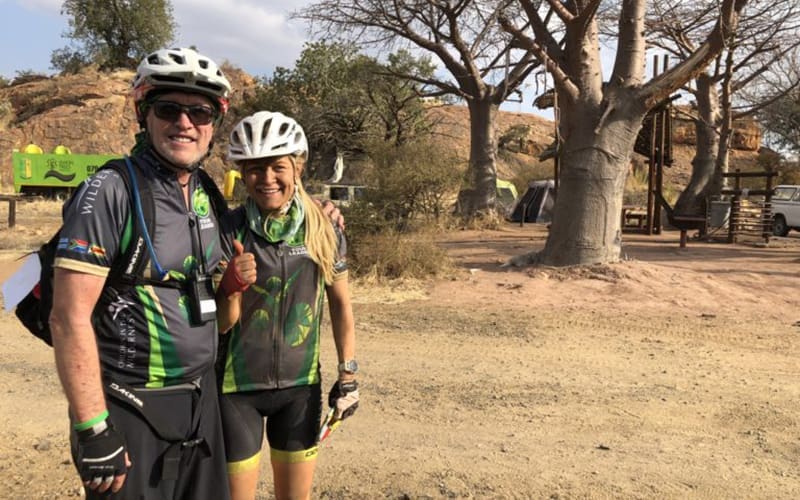
David & Kelly Evans at the “Tour de Tuli” bike event, a fundraiser for the area’s Children in the Wilderness program
For this iteration of AAC’s Stay Longer, Stay Remoter, we decided to interview Mashatu’s dad-daughter duo of David Evans, Mashatu’s Managing Director, and Kelly Evans, Mashatu’s Sales Manager.
With Kelly on board, this family-owned reserve has a 4th consecutive generation! We asked them a variety of questions, including why they consider Mashatu to be “remote,” why its a great safari destination to stay “longer” at, and had an in-depth discussion about their newest property: Mashatu Euphorbia Villas.
What drives the two of you and Mashatu as a whole? What are your hopes for the future of Mashatu?
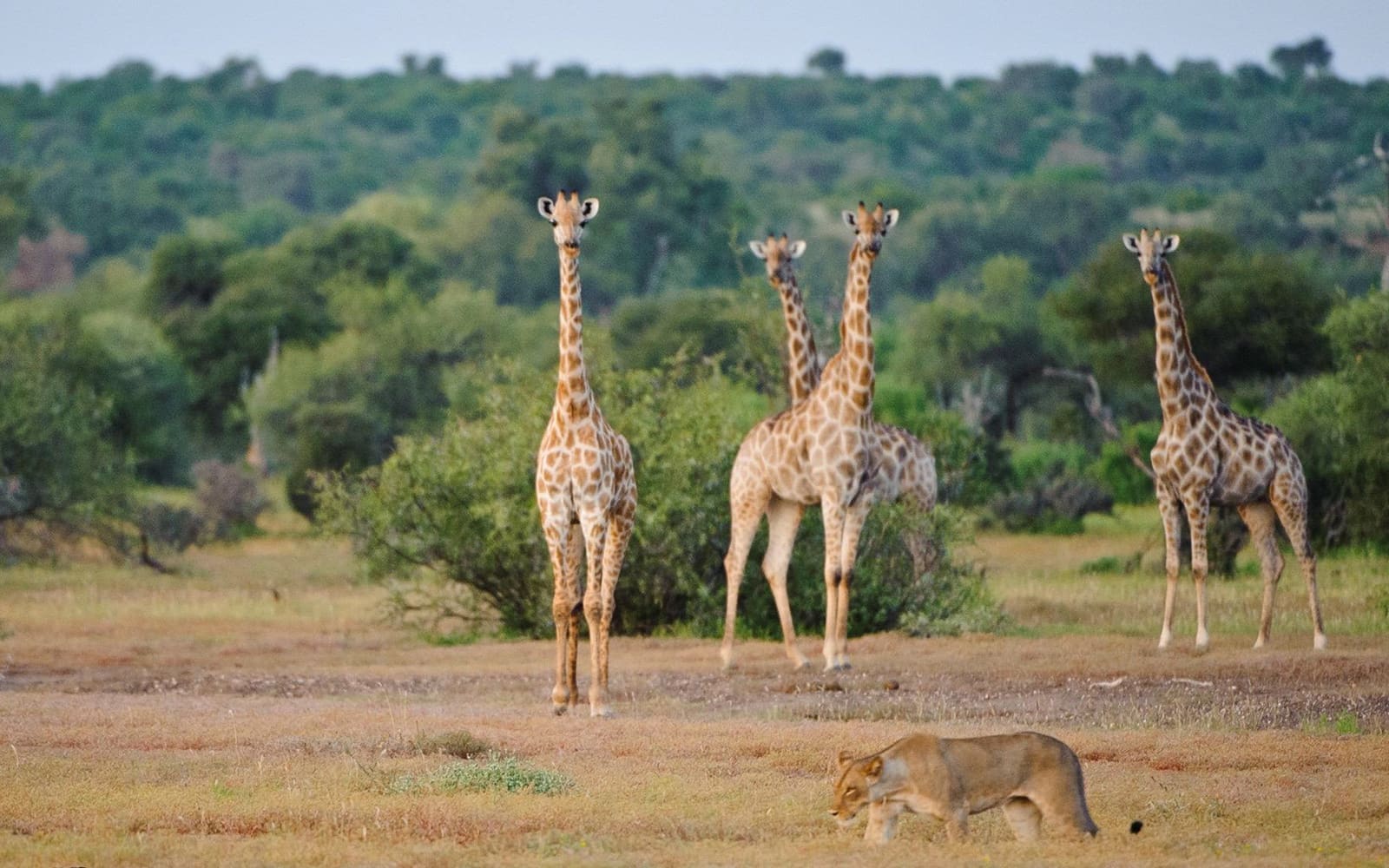
David Evans cites their giraffe re-introduction of giraffe as one of Mashatu’s biggest success stories
DAVID: The main drive is to continue our conservation successes. The present-day area of Mashatu was effectively hunted to extinction by the big-game hunters of the late 1800’s. It was not until the 1960’s, when agriculture in the area was phased out, that this area’s wildlife began revitalizing.
We have witnessed the success of the many species which have returned and begun to thrive. For example, we re-introduced in 22 giraffes 1983; now there are 700. Leopard and cheetah were virtually impossible to see in the 1960’s. But with the gradaul return of numerous plains game species, it’s possible to see leopard and cheetah every single day.
It is clearly evident that through protecting this area, only shooting wildlife with camera lenses, the conservation model employed is working, and we need to continue in this trajectory to ensure this reserve continues to heal and species find this a sanctuary for many decades to come.
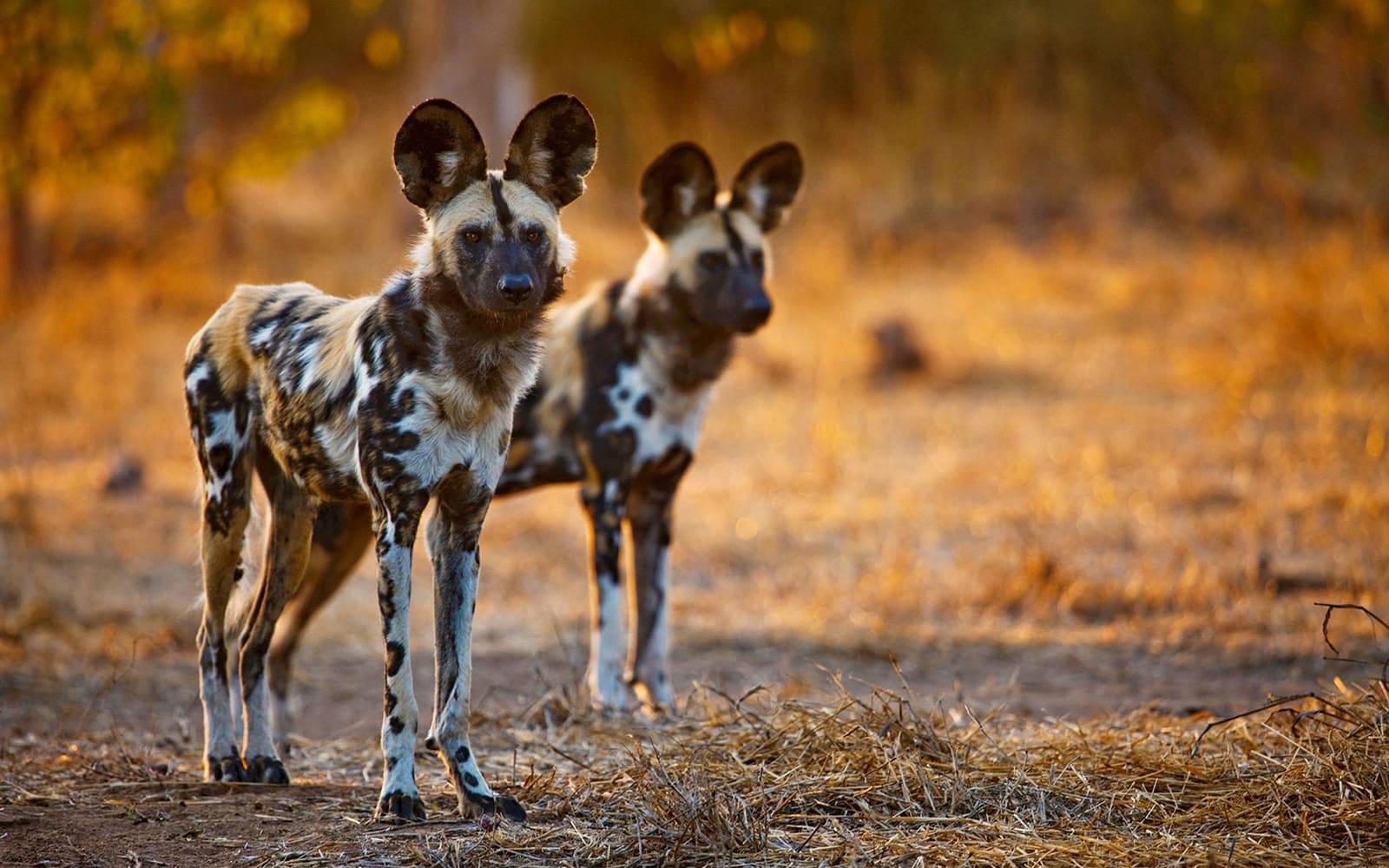
Thanks to a successful reintroduction, African Wild Dogs can bow be seen at Mashatu
KELLY: As a child, I was fortunate to grow up in Mashatu. But before joining Mashatu, I had originally decided to follow my university major and move into a market research firm. Although I have always been incredibly conservation-minded, I wanted to try the field that I had studied at university for a couple years, before potentially assisting at Mashatu.
Ultimately, an innate desire to want to further conservation in this area drove me to work at Mashatu with my dad. Telling people why they should visit or send their clients and what makes Mashatu so unbelievably unique, is part of my job, but it is something I have been doing for many years even prior to employment.
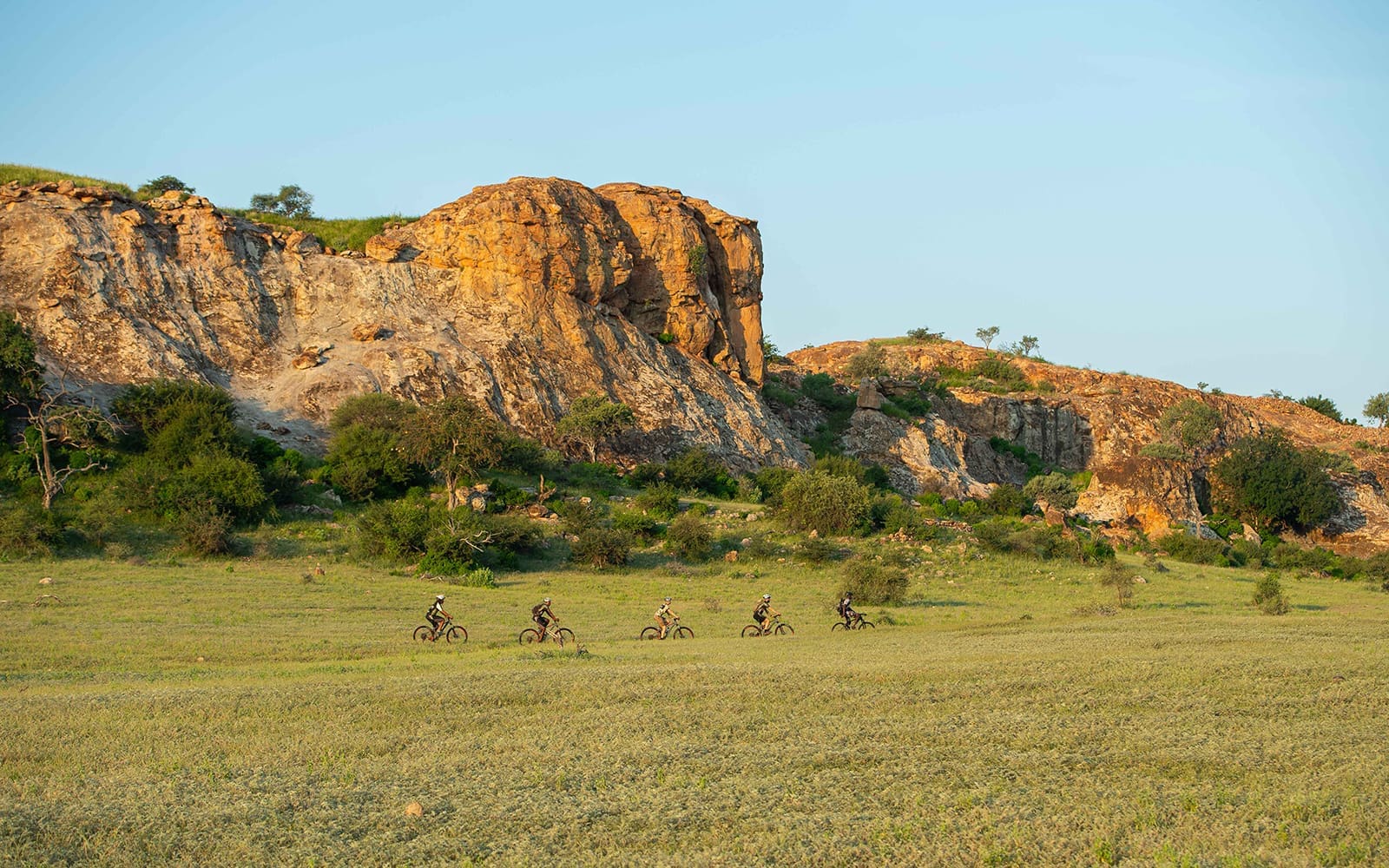
Cycling alongside one of the many red-faced sandstone ridges within Mashatu
As I learn more and I am mentored into my role by Dad, my respect for this land, the staff and wildlife grows even more and it’s this care, respect and desire for protection which I hope reflects in my work, to encourage many more guests to go on a Mashatu safari.
In regards to our staff, we have an average employment of over 14 years for our guides and many of our team members are 2nd or 3rd generation, highlighting the reliance of our communities, on the success of Mashatu. The staff are family and the reserve has become home for them. My dad and I like to call this process the “eco-tourism triangle,” where tourism creates jobs, which in turn allows wildlife and humans to co-exist and ultimately leads to a successful conservation model.
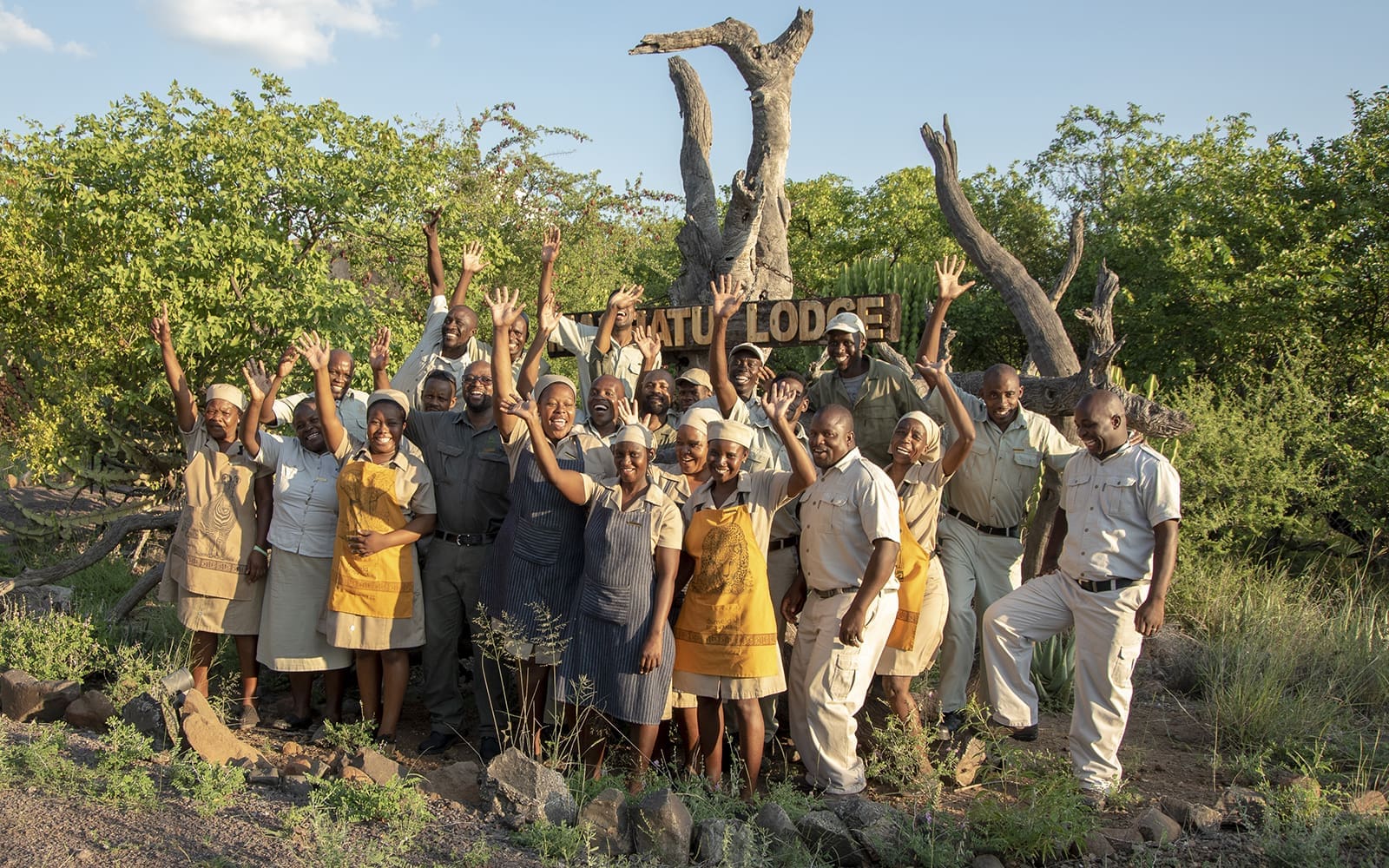
The friendly staff at Mashatu Lodge
Furthermore, Mashatu is the second biggest employer in the Bobirwa region of Botswana. We need to continue to operate successfully in the long-term, through the support of tourism, in order to continue to employ our community members and provide livelihoods for them and their families. Opportunities in rural areas are not freely available and we take pride in our contribution to community upliftment on our reserve boundaries.
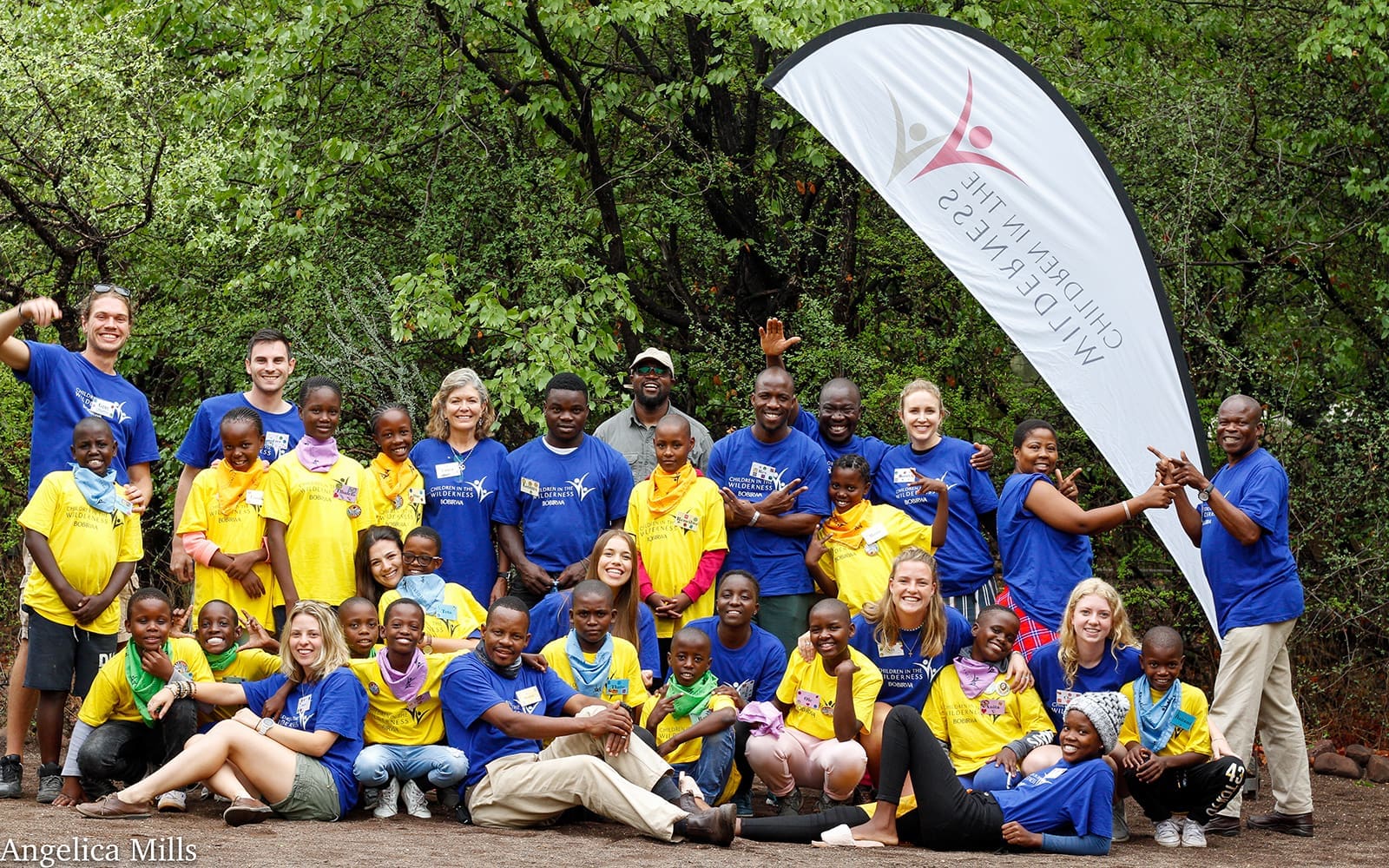
In December, numerous local children stayed 10 nights at Mashatu Tented Camp to learn more about conservation as part of Mashatu’s Children in the Wilderness Program
We continue to support our Children in the Wilderness Bobirwa program and we hope that the next generation grows up further appreciating wildlife, wanting to protect it and to follow in many of their parents’ or grandparents’ footsteps working at Mashatu. Instilling a sense of understanding and love for conservation from a young age will hopefully ensure the protection of wild spaces and the value they hold.
Why is Mashatu called the “Land of Giants?”
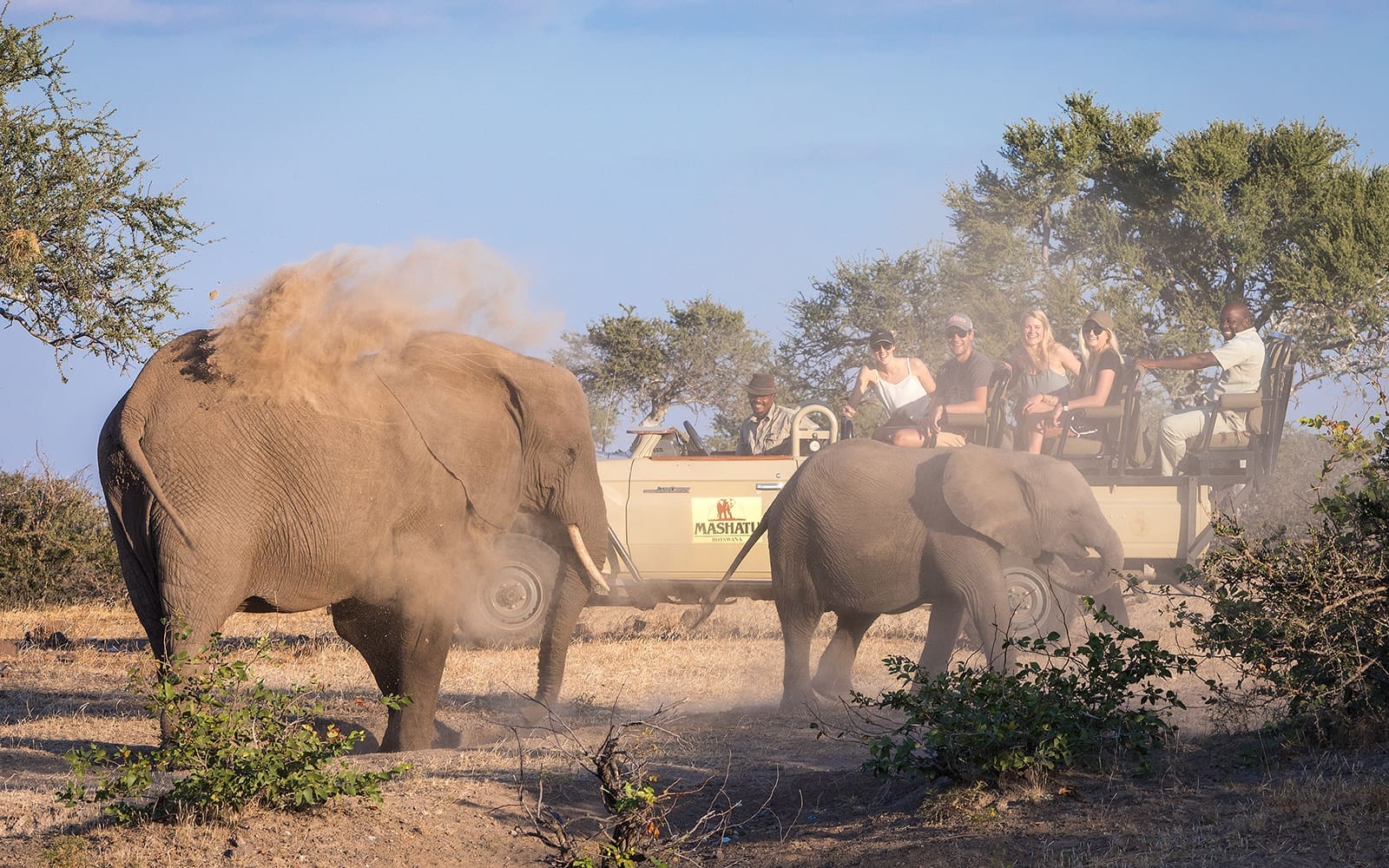
Some of Mashatu’s “giants”
DAVID: Mashatu is called ‘The Land of Giants’ because it is provides a sanctuary to, among other African animals, the “giant-sized’ species of Africa: lion (largest cat), giraffe (tallest mammal), elephant (biggest mammal), eland (biggest antelope), kori bustard (heaviest flying bird), ostrich (biggest bird) and the mighty baobab tree.
In your eyes, what makes Mashatu a “remote” safari destination?
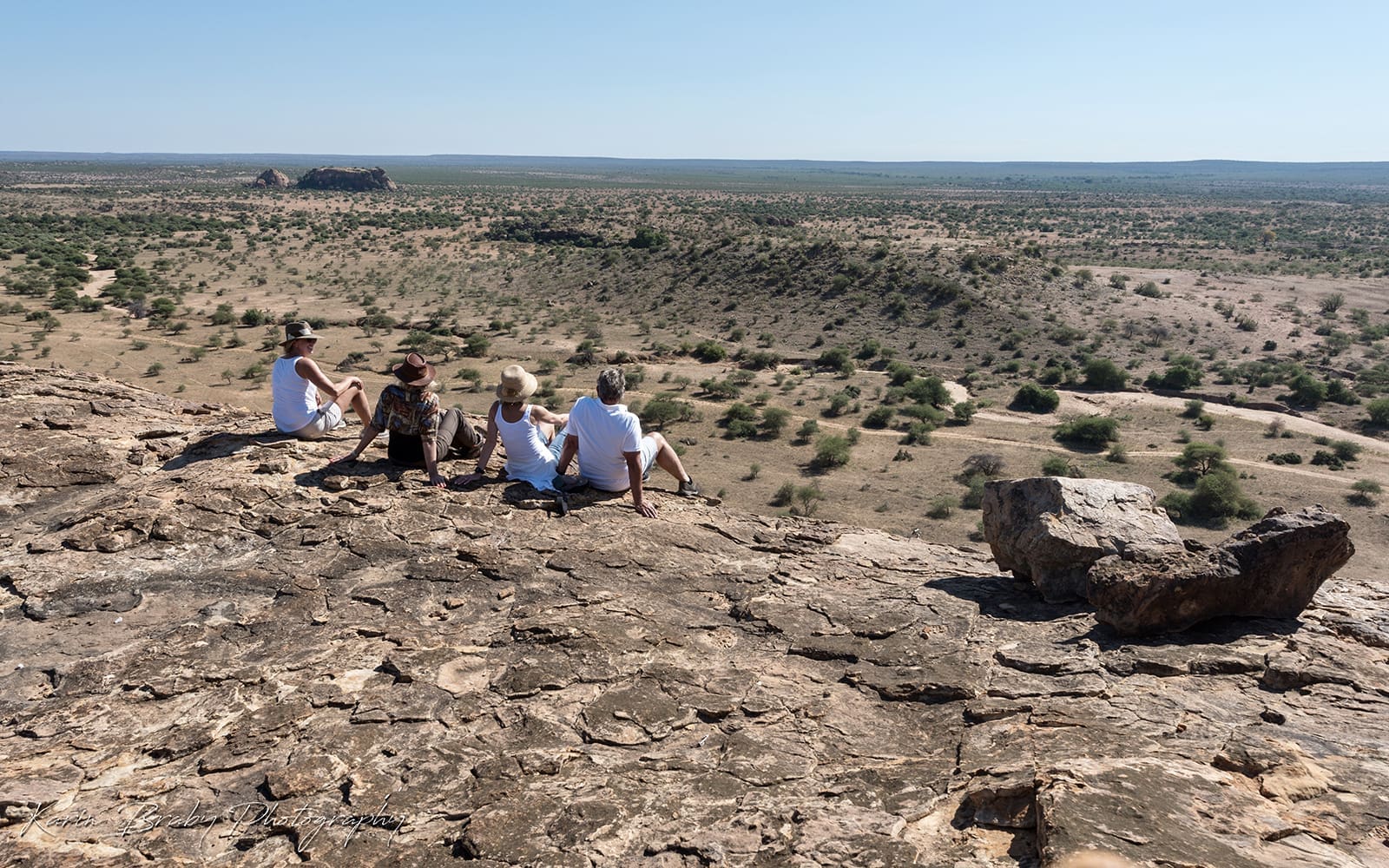
With so few people in such a large reserve, it feels like you have pristine wilderness all to yourself at Mashatu!
KELLY: Mashatu is remote, often described as completely wild and, seen as such, an open and vast eco-system. The reserve is completely unfenced, so the animals inhabit the reserve, not because they have to, but because they choose to make it their sanctuary.
The reserve encompasses 72,000 acres. Combined with limited number of vehicles, guests feel they are by themselves in the middle of wild spaces. They have the reserve to themselves to walk, cycle, horse ride, visit underground hides, go out with our professional filmmakers at Mashatu, or just enjoy the traditional vehicle safari. It’s essentially being able to have sundowners without seeing another person or vehicle, and feel lucky enough to enjoy peace, quiet and an escape from the bustle of many other wildlife areas which don’t embrace the “low-density tourism model.”
You have 3 permanent camps and lodges: Mashatu Lodge, Mashatu Tented Camp, and the newly-opened Euphorbia Villas. Tell us about your properties.
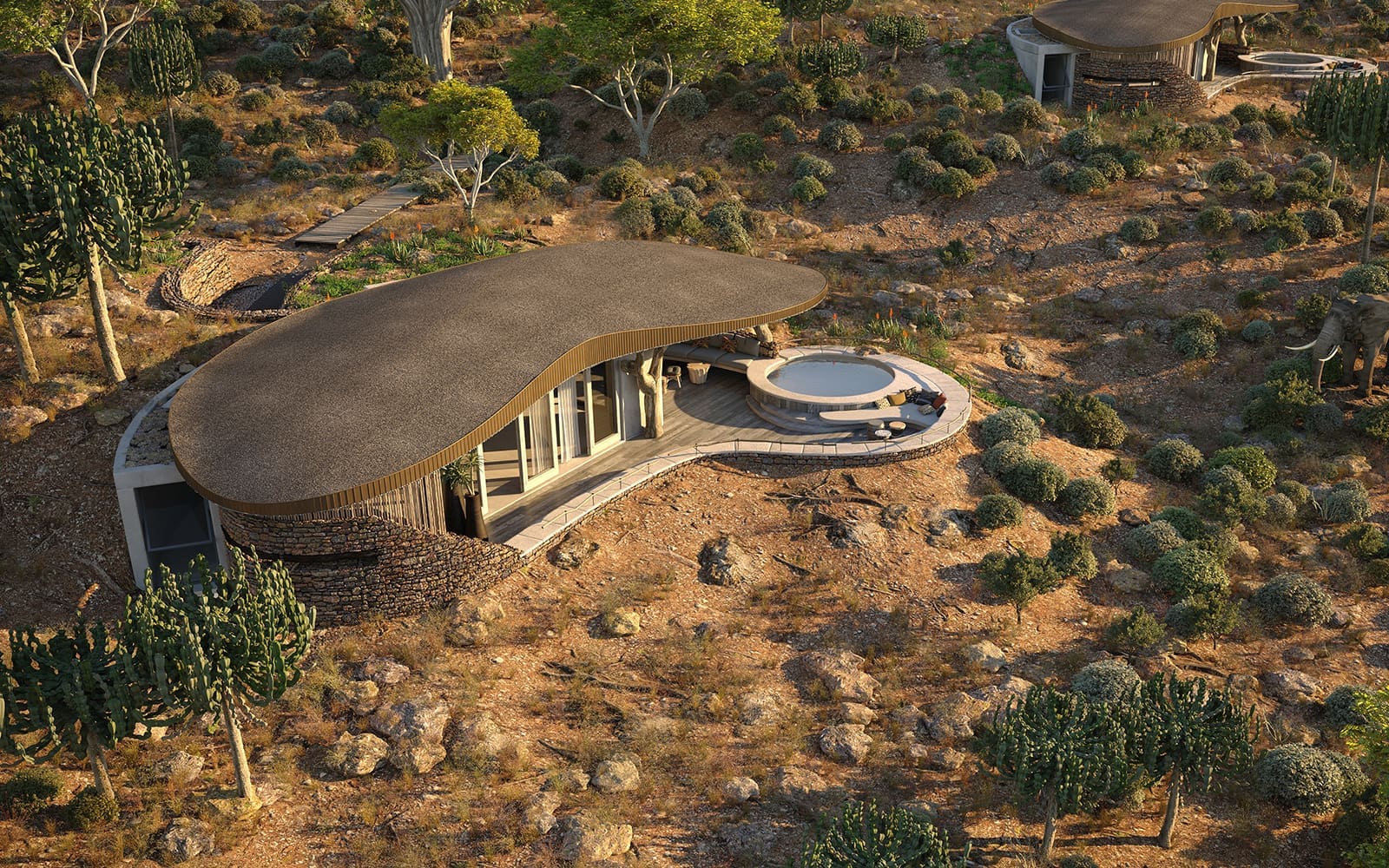
Aerial view of one of the 8 Euphorbia Villas.
DAVID: It’s one thing that Mashatu is world-renowned wildlife destination. But we’ve always wanted to make it available to all aspiring safari-goers by offering accommodation options at differing price levels.
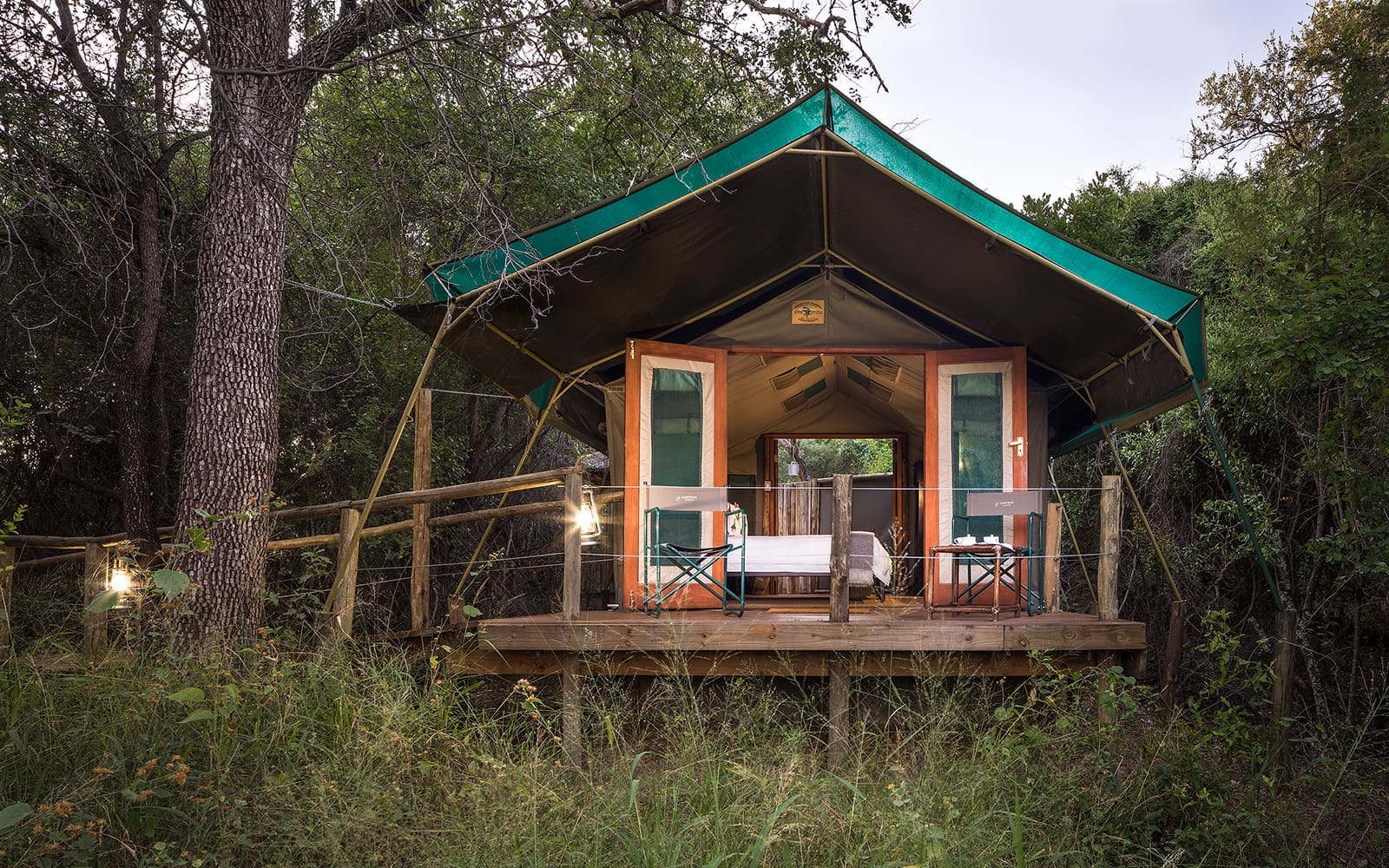
Exterior view of one of the tents at Mashatu Tented Camp
KELLY: First, Mashatu Tented Camp is our very comfortable 8 tented offering for the more budget conscious wildlife enthusiast. The Mashatu Lodge is the next level, offering sumptuous accommodations as our family camp. And our latest property, Mashatu Euphorbia Villas, is targeted at the most discerning traveler who seeks low tourism numbers and superior levels of service and comfort as a safari choice.
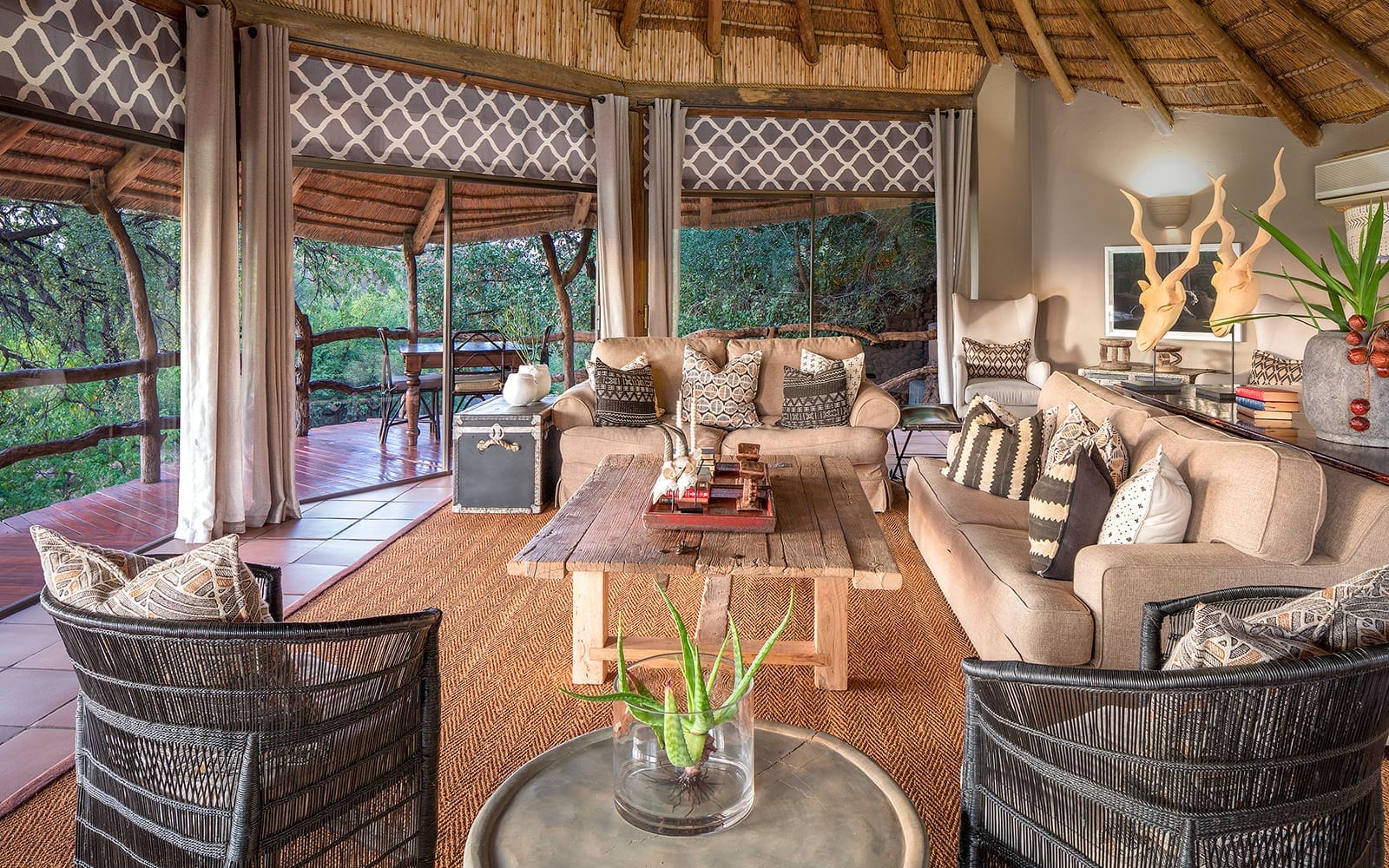
The lounge at Mashatu Lodge
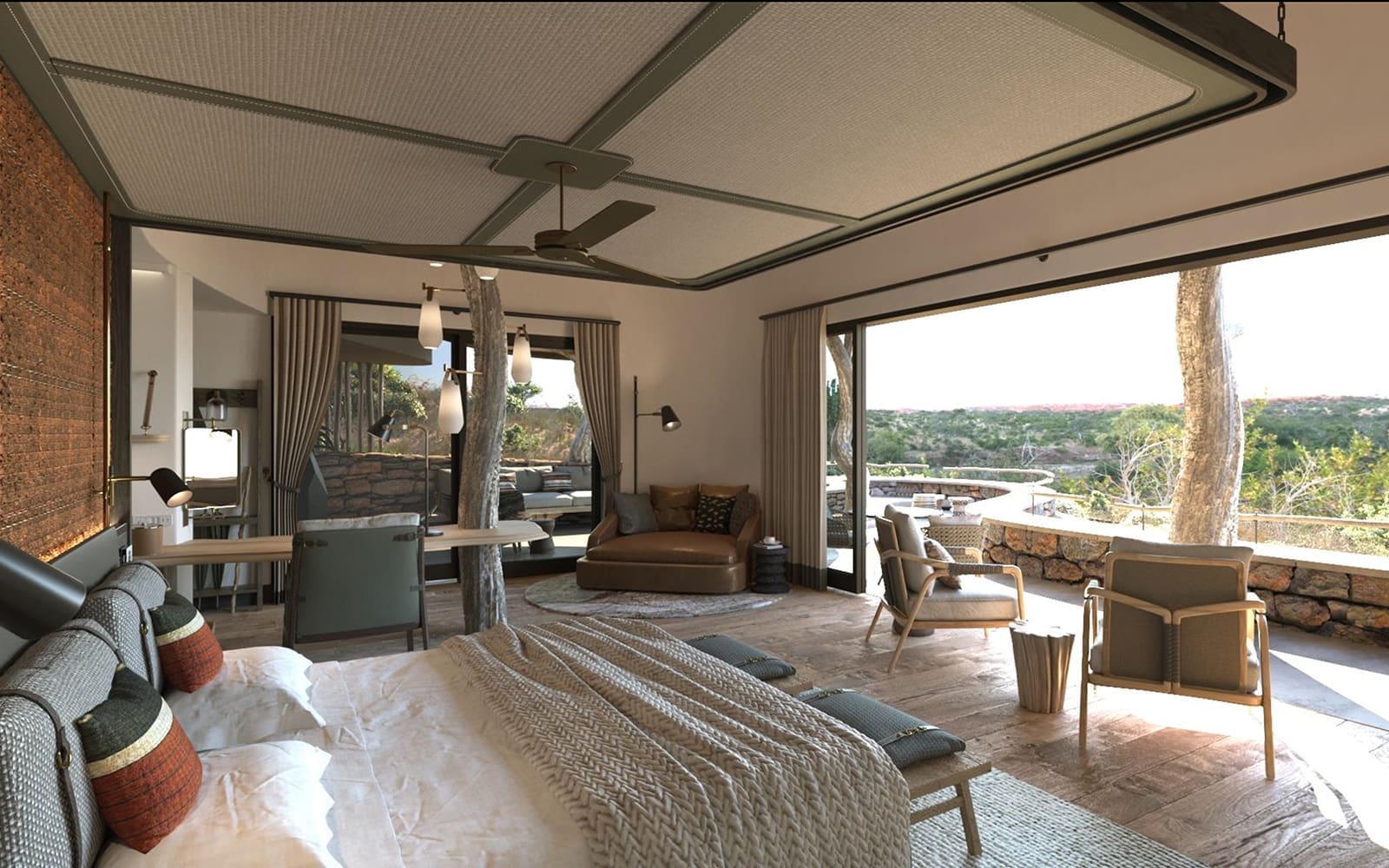
View from one of Mashatu’s Euphorbia Villas
Each camp has its own offering, differentiating comfort and service, all the while accommodating clients in comfort, great food and wonderful ambiance. In all things safari, and a prerequisite for visiting Mashatu, the choice of a camp offering offers no difference in the wildlife experience for which Mashatu is world-renowned. All the camps will be solar powered in the next few years, with Euphorbia Villas leading the charge. Tented Camp is also set to be installed very soon.
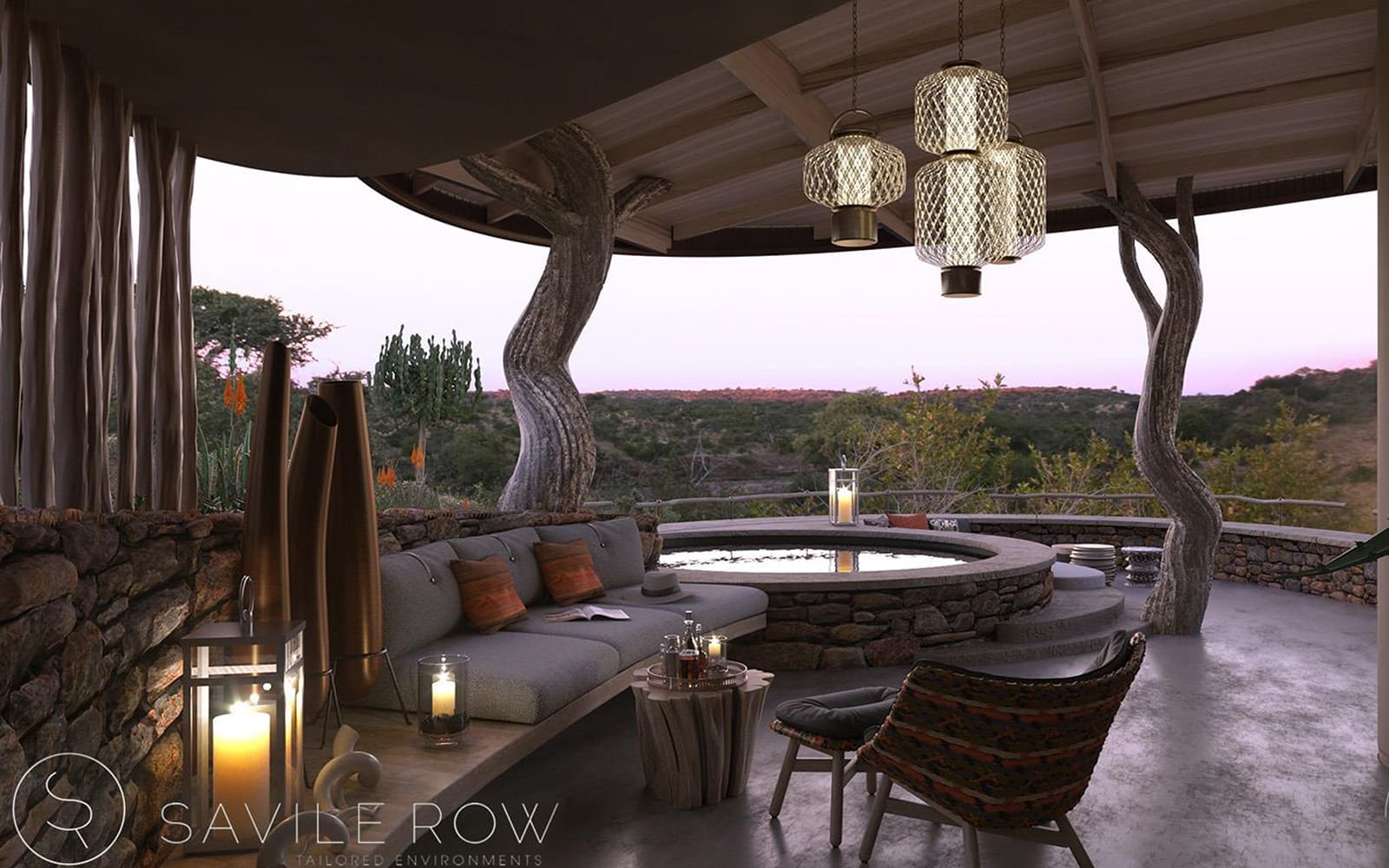
The very inviting outdoor deck of one the villas at Euphorbia Villas
David: When designing the Euphorbia Villas, we took inspiration from the Mopane tree’s pod. During the dry season, the Mopane’s pods fall to the ground, providing sustenance to many of Mashatu’s herbivores. We also made sure that guests would be well-provided. Each villa has a plunge pool, indoor and outdoor showers, outdoor lounge seating, and, of course, a “loo with a view!”
Only about 1 in 10 of our clients stayed at a safari camp or lodge for 4 or more nights. What makes Mashatu a place worth staying at “longer?”
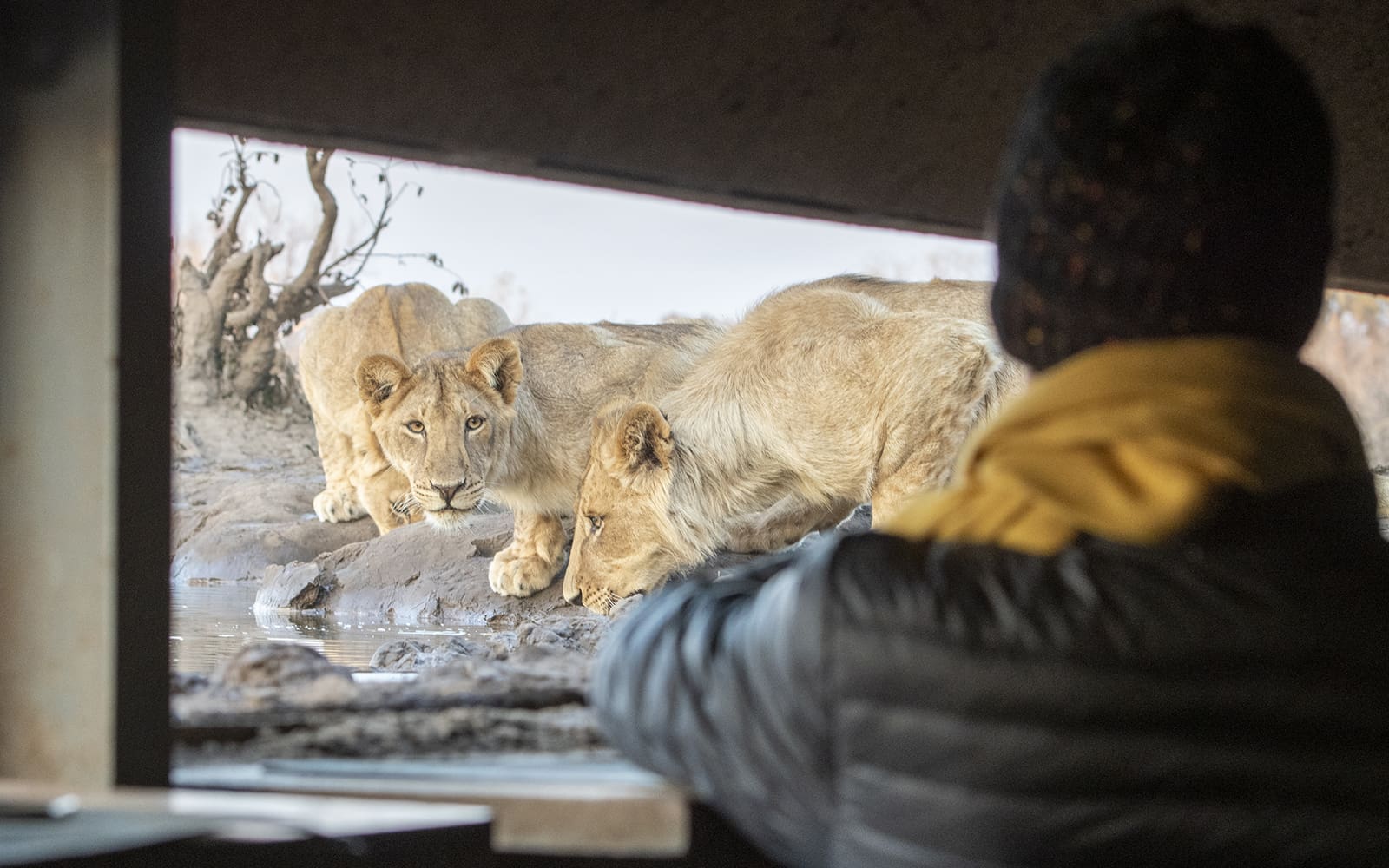
Who needs a camera to forever capture the moment of looking eye-to-eye at a lion!
KELLY: Mashatu enjoys the patronage of many repeat and loyal clientele, many of who visit each year and have been doing so for decades. A week is not unusual and clients who stay 2-3 nights will often be heard to comment that they should have stayed longer.
DAVID: What ultimately keeps bringing them back is that the reserve has some of Africa’s best predator sightings, and our numerous adrenaline-inducing activities!
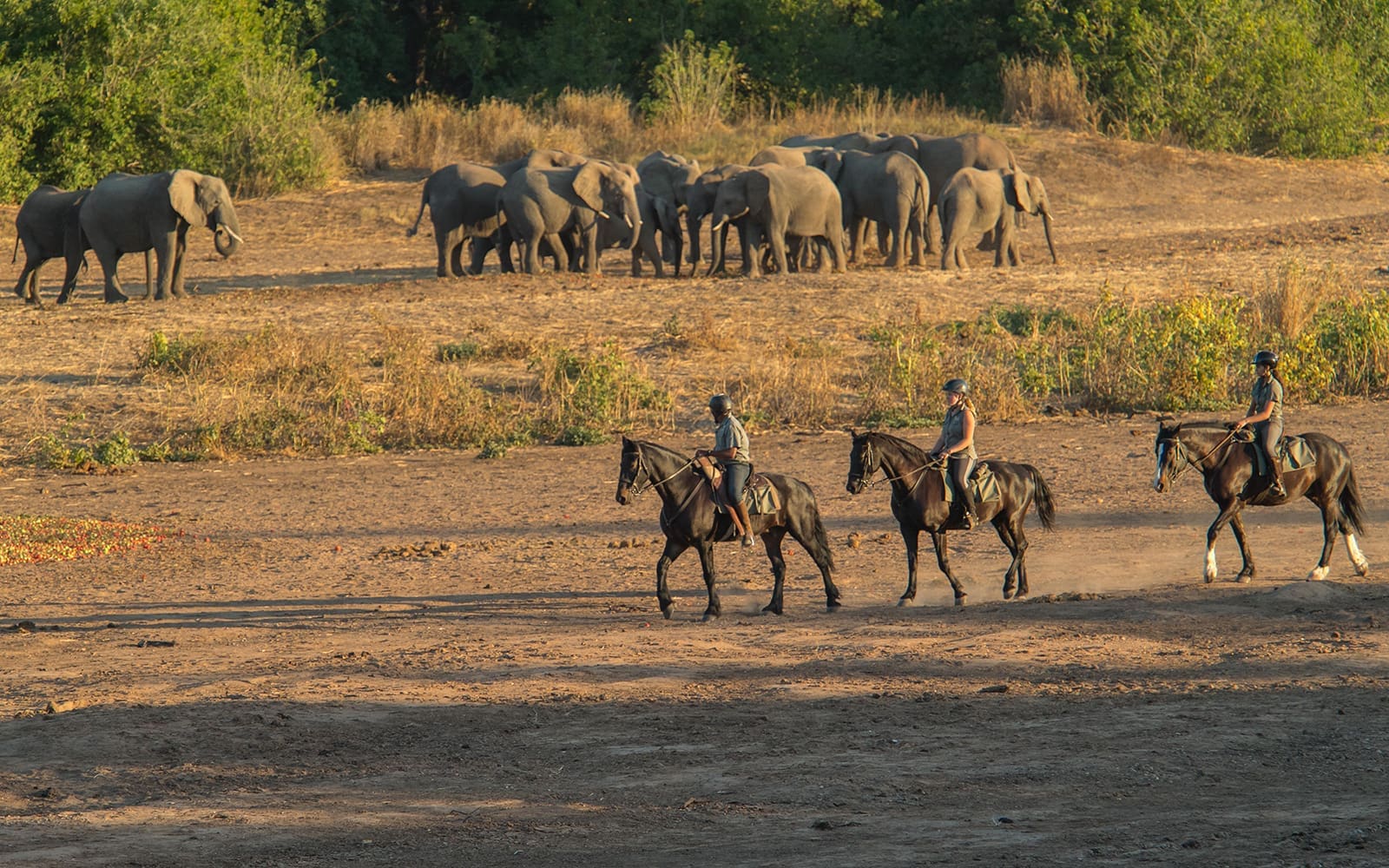
Experienced riders shouldn’t miss the chance to go on a horseback safari!
KELLY: Besides day and night game drives, guests have to access to three photographic hides, including our underground elephant blind. The afternoon light is sublime for photography. And because of our numerous big cats on the prowl, patient photographers have a great chance of capturing a “kill.” They’re very popular, so we suggest you book space at one of our hides in advance.
Our other adrenaline-inducing adventure activities include walking, horseback, and mountain bike safaris. Participating in these activities gives a completely different dimension to the traditional safari.
Last but not least, the massive property contains diverse, changing landscapes, such as vlei, sandstone outcrops, savannas, croton forests, etc. A hike up a rocky hill will end with a stunning view – and a cold drink for a sundowner! And for those who appreciate history and culture, Mashatu’s historical footprint features remains of ancient civilizations, battle sites, and pioneers.
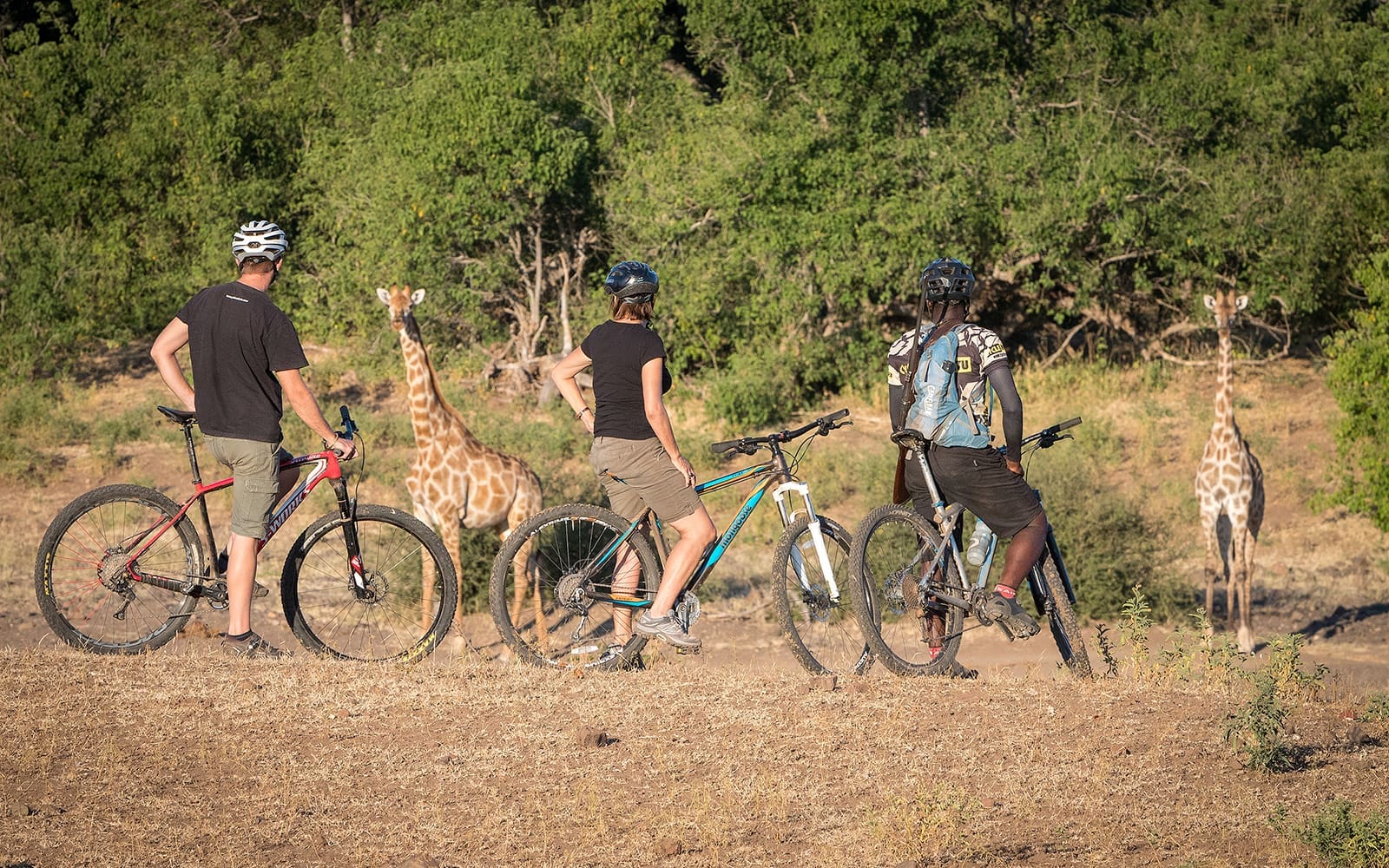
You don’t need a high level of fitness to mountain bike: the terrain is hardly ever steep and very rarely muddy
DAVID: In short, we recommend no less than 4 nights when visiting Mashatu!
AAC tries to steer our clients towards the best game viewing experiences. A major component of this is guide quality. Who are your guides, and what makes them special?
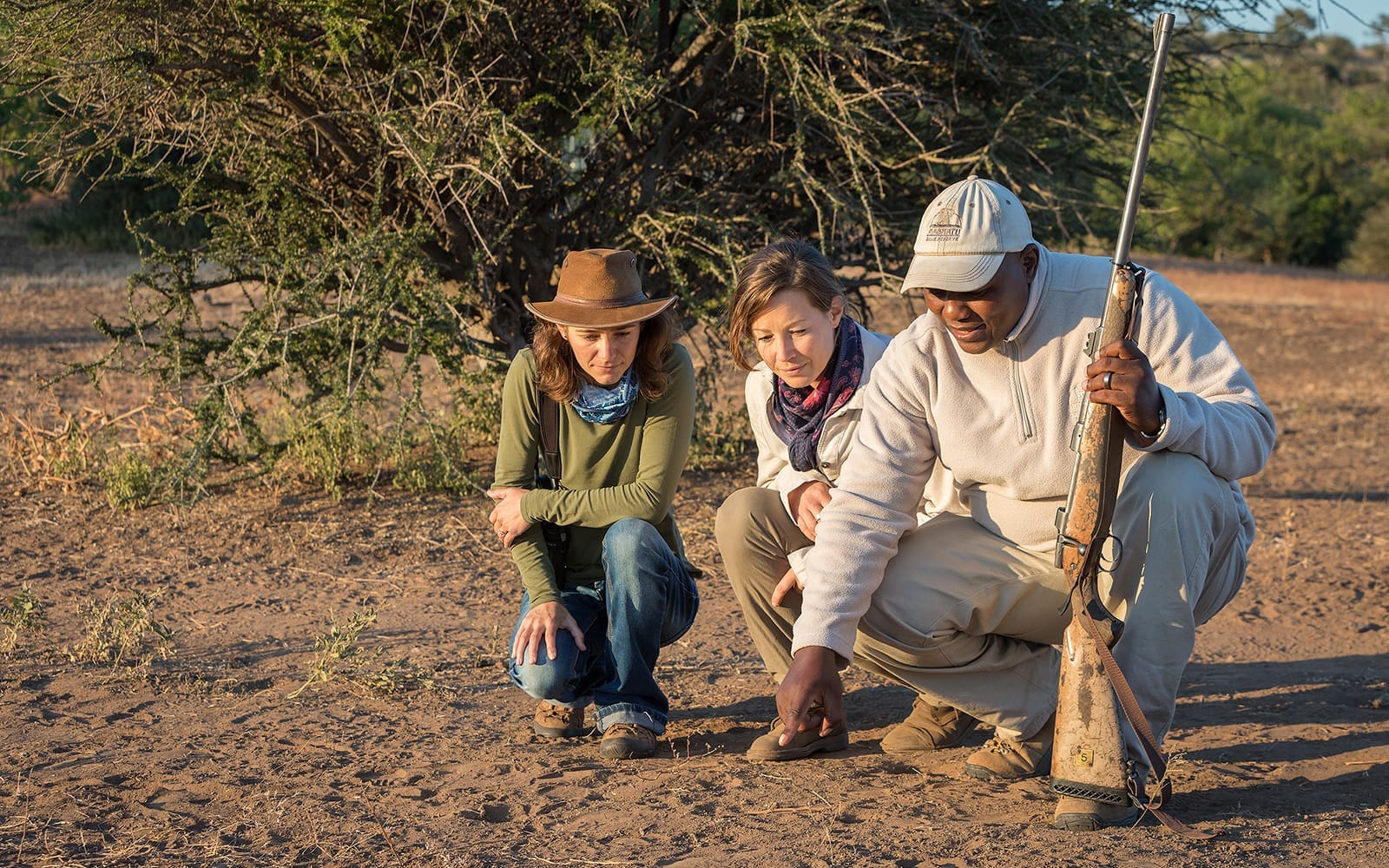
A walk allows a greater understanding and appreciation for wilderness than a game drive could alone
DAVID: Two features of our guiding staff enhance the wildlife experience at Mashatu.
First, the average employment of our guides is 14 years and the majority of them come from surrounding communities. They are therefore highly qualified and established guides who know and understand the Mashatu wildlife, topography, animal behaviours and tracking.
Second, to complement these guides, and unique in Botswana, are the presence on each vehicle of trackers, located in the back of each vehicle, these trackers are doing their internship as apprentice guides before they qualify. Trackers are qualified interns in the rear of the safari vehicles who assist interpret the safari experience, essentially offering 2 qualified specialists in each safari vehicle.
Some of our clients are avid wildlife photographers, while other clients of ours would probably be interested in learning how to be a better photographer. What makes Mashatu great for photographers, veterans and newcomers alike?
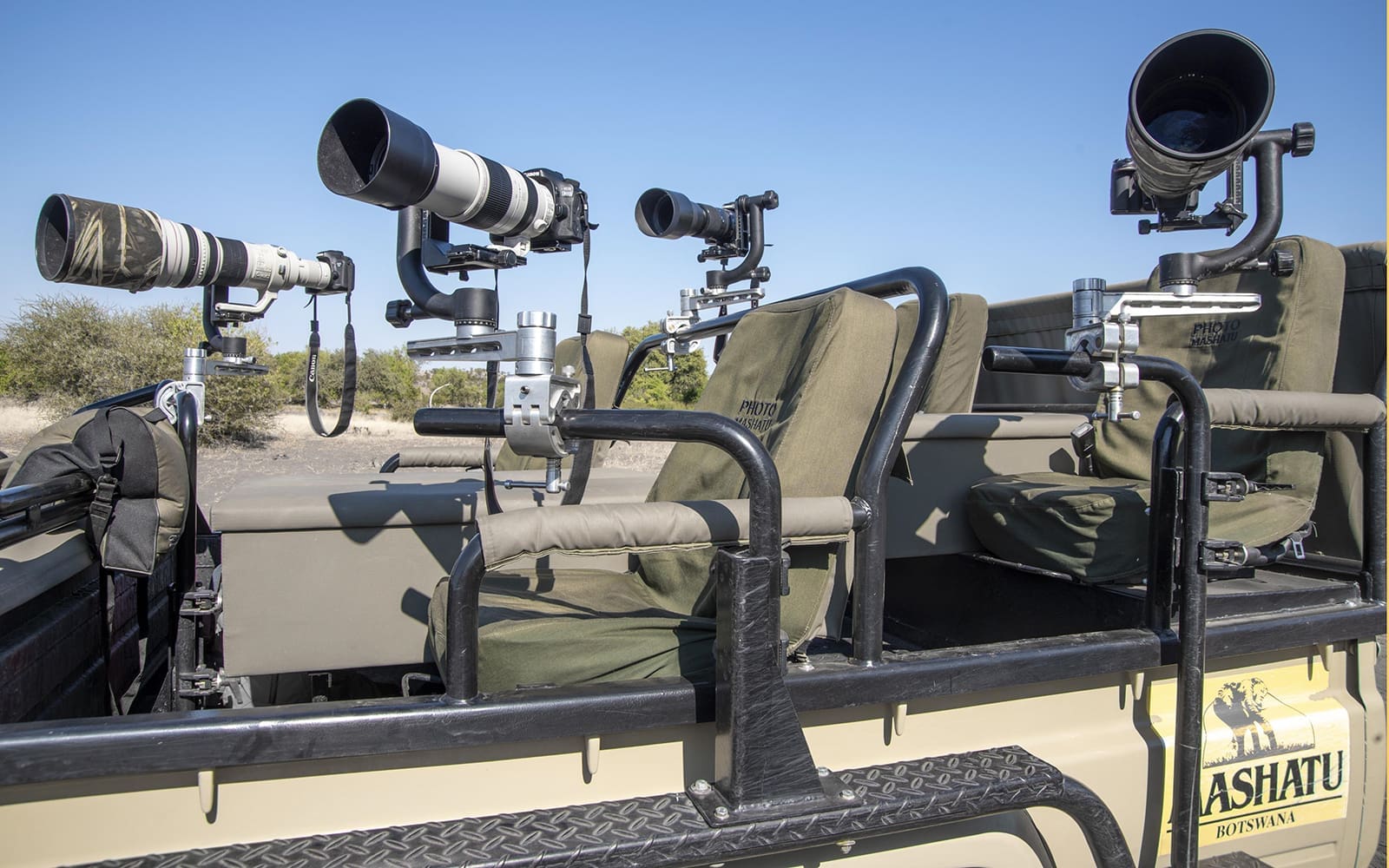
The PhotoMashatu vehicle is sole-use; booking it provides 1 hide visit and a photography tutoring session
KELLY: Mashatu is renowned for having what is referred to in photographic circles as a high “photographic hit-rate.” The absence of vegetation, even in the rainier summer season, makes photographic opportunities on Mashatu above average in every respect, predators included.
Guests participating in our PhotoMashatu program will receive tutoring from our two professional wildlife photographers in the PhotoMashatu hide. They will also have access to the PhotoMashatu vehicle with a professional photographer. Otherwise, guests can get some editing tips and tutor lessons can be done at their lodge or camp.
DAVID: Another new offering is the Mashatu in Motion team, where guests can join our professional filmmakers for a drive, or even book the MIM vehicle for lessons on how best to use their cameras to capture film videos with just their normal photographic cameras or cellphones. Guests can also enjoy tutoring on creating clips of their time here and leave with a 1-5 minute video clip to show friends and family when they get home.
Mashatu Lodge was recognized for multiple awards in last year’s Safari Awards, including “Best Value Safari Property in Africa.” Why do you believe your guests get such good “bang for the buck?”
DAVID: Mashatu is privately owned land and therefore the necessity for the payment of concession fees to 3rd party landowners whether government, land board or national park, is not a requirement for Mashatu as lodge owners. Mashatu is still heavily involved in our Mashatu Conservation Trust, the CITW programme and many others, but it is because we do not pay concession fees, that Mashatu offers such incredible value.
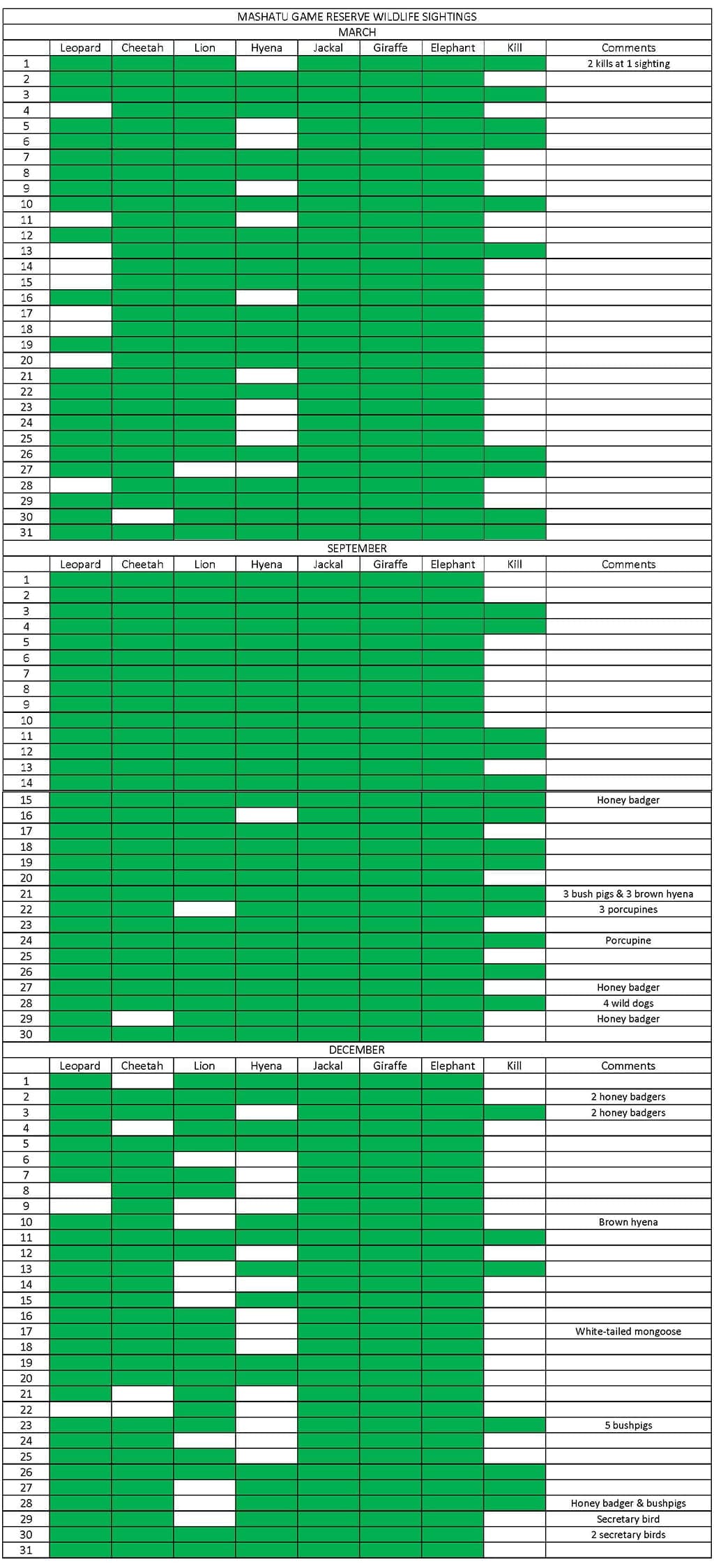
Even outside of the peak-season month of September, the wildlife sightings are spectacular
KELLY: Additionally, the wildlife sightings are some of the best in southern Africa and the reserve’s big cat viewing is superior to most wildlife areas in Botswana, yet our rates remain modest.
Mashatu is also locking in rates from 2019 through 2020 and 2021, to assist guests with a great value safari, even if international flight prices increase. Additionally, our Pay-3-stay-4 option encourages guests to visit us for a minimum of 4 nights (only paying for 3) when many guests leave after 4 nights saying they wished they had just one or 2 more.
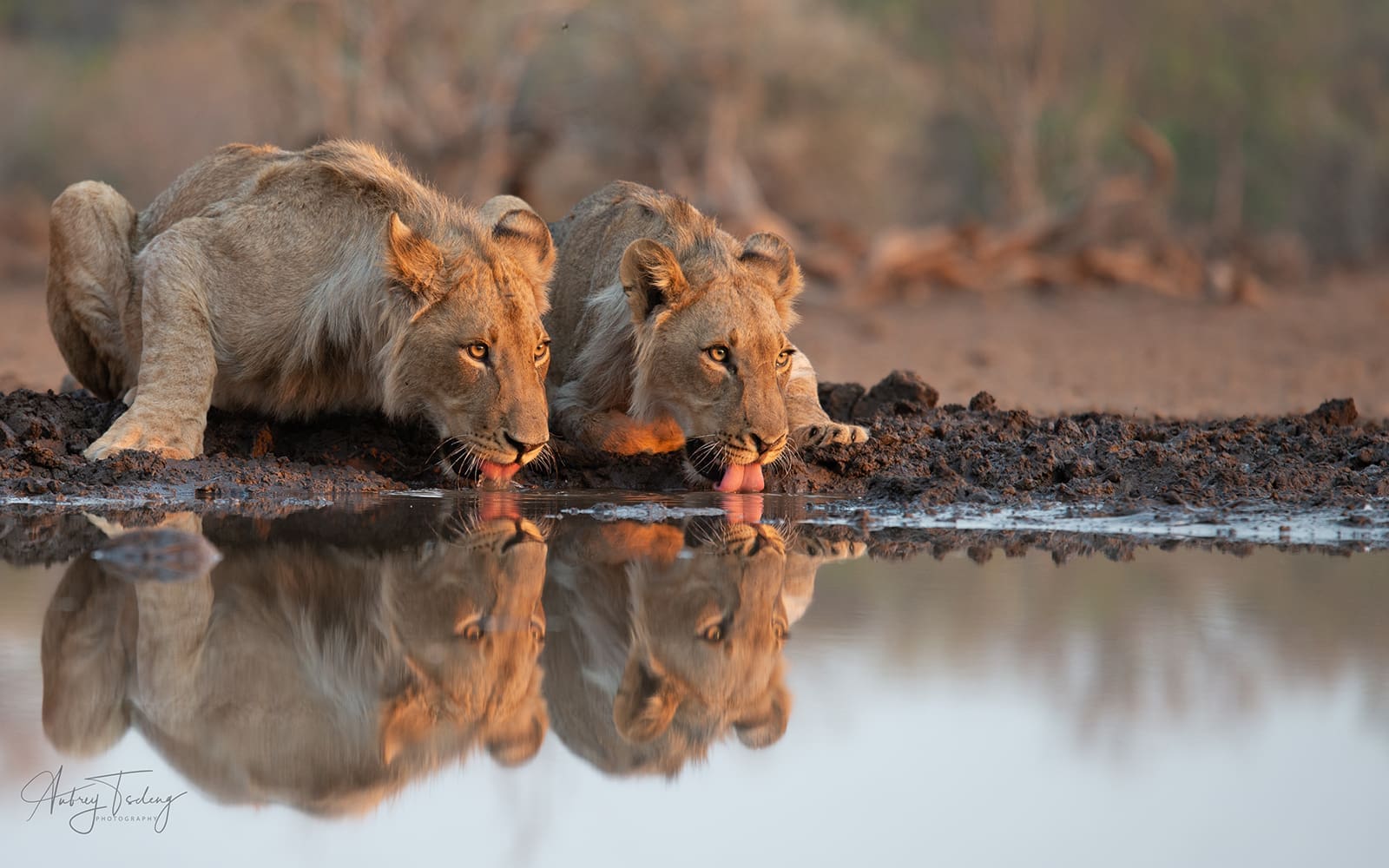
The reserve’s affordable rates allow you to spend more time on safari to capture photos like this
It’s interesting to note that between 20-30% of Mashatu patronage are repeat clients. We think its because Mashatu casts a magical spell on them – guests just cannot seem to get enough! Once, twice and the record is 28 visits to Mashatu, for some guests a month at a time, each year.
Mashatu Lodge was also recognized as an honorable mention for “A Family Safari Experience in Africa.” In your opinion, what makes Mashatu great for families?
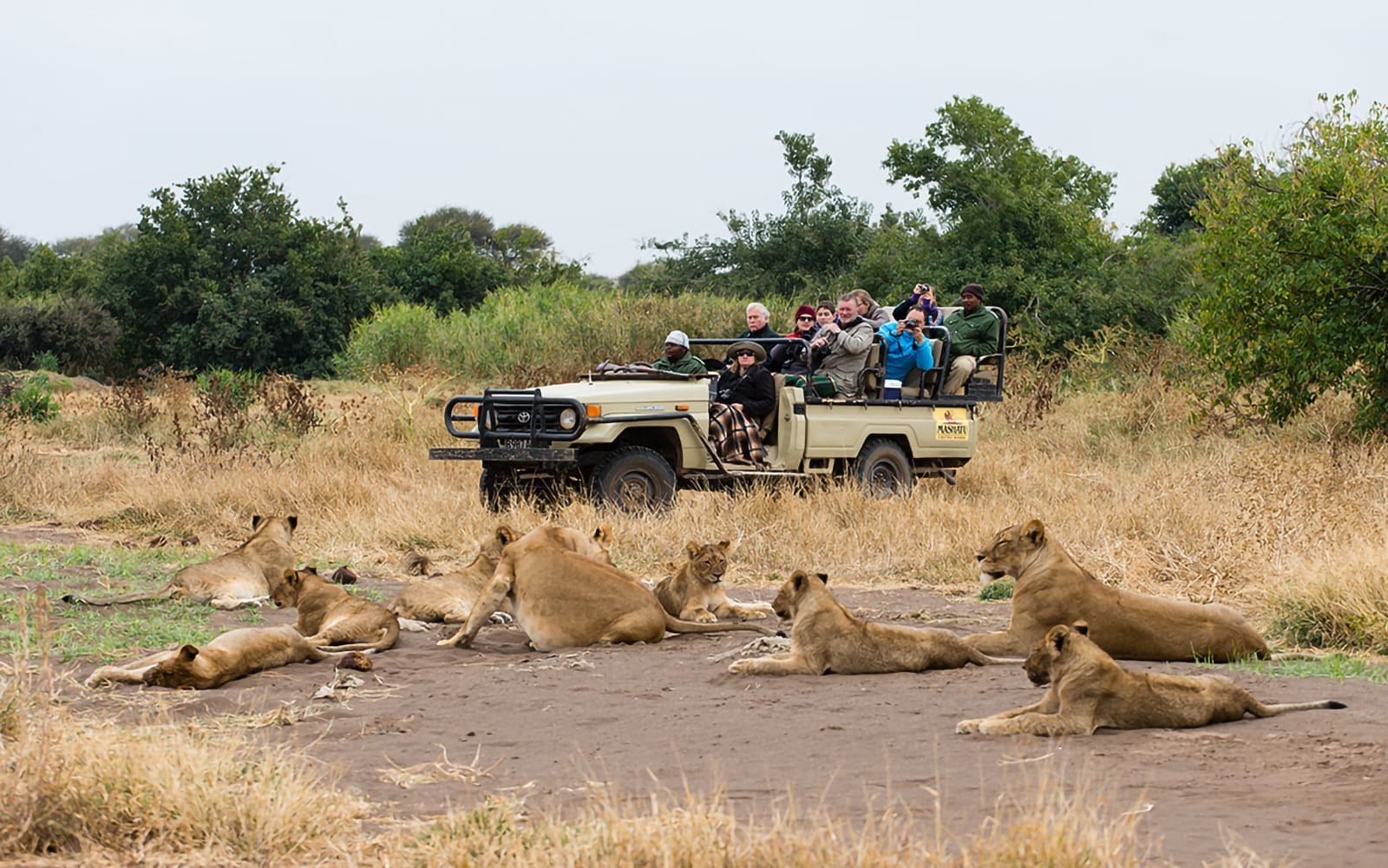
Families will have their own vehicle, separating themselves from other guests
DAVID: Mashatu Lodge really does lend itself to multi-generational travel. Grandparents can enjoy the vehicle safaris, while the family all choose different adventure activities each day. For children, the wildlife viewing is always exciting and keeps them entertained, where they experience seeing all the different cats, as well as learning about our very unique species, like the brown hyena or African wild-cat. Meeting back at camp and discussing the mornings excitement over brunch is a highlight for families.
Each camp is also tailored to different age groups. For families with younger children, Mashatu Lodge would be appropriate, as their is no minimum age requirement. The minimum age requirement at Mashatu Tented Camp and Mashatu Euphorbia Villas are 16 and 12, respectively.
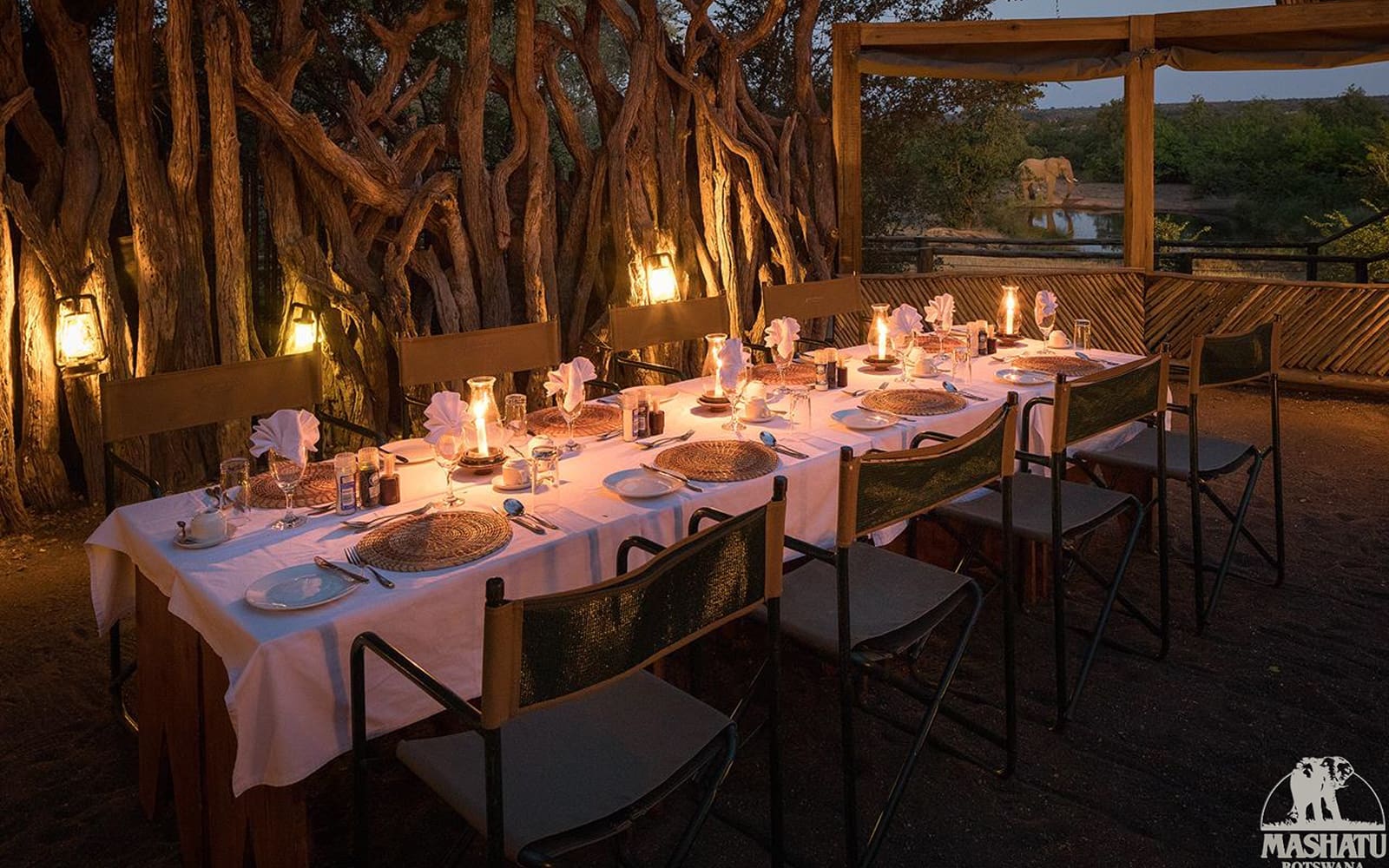
The ‘Boma’ is a fantastic setting for family dinners
KELLY: Well, as someone who basically grew up here, I can’t rave enough about kids visiting here! Many of our Mashatu guides and management have worked a year or more at one of Disney’s exchange programs at Animal Kingdom. For instance, Gaone Ratsoma, the leader of our Children’s Program, spent two years on Disney cruise liners looking after children.
The Mashatu Lodge suites are all able to sleep up to a family of 4, with two en suite bathrooms and enough space to accommodate everyone in the separate beds. There are also inter-leading suites, so that mum and dad enjoy their own space, but the children are in the next door suite (6 beds between the inter-leading suites). Families will also like dining at the lodge’s Boma.
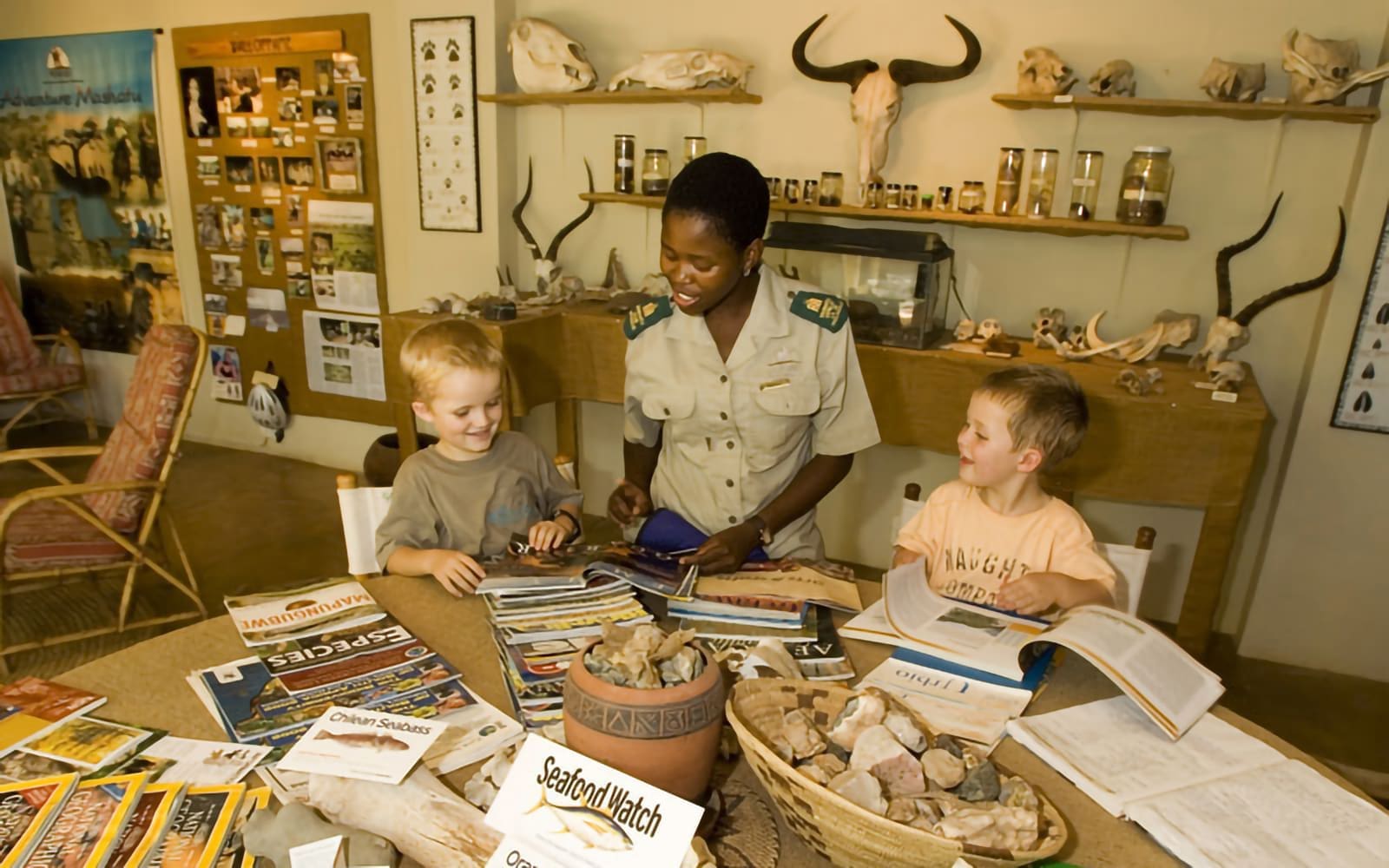
The Discovery Room
And finally, Mashatu Lodge‘s “Discovery Room” is a mini museum, which has all the predator research, elephant research, community projects and other information, as well as bones, artifacts and other fascinating items of interest for children to explore and learn from. All children are given a Mashatu Backpack and head out on safari with their families, but our rangers customise the drives to suit even the youngest children.
What is Mashatu like outside the peak season months from May to October?
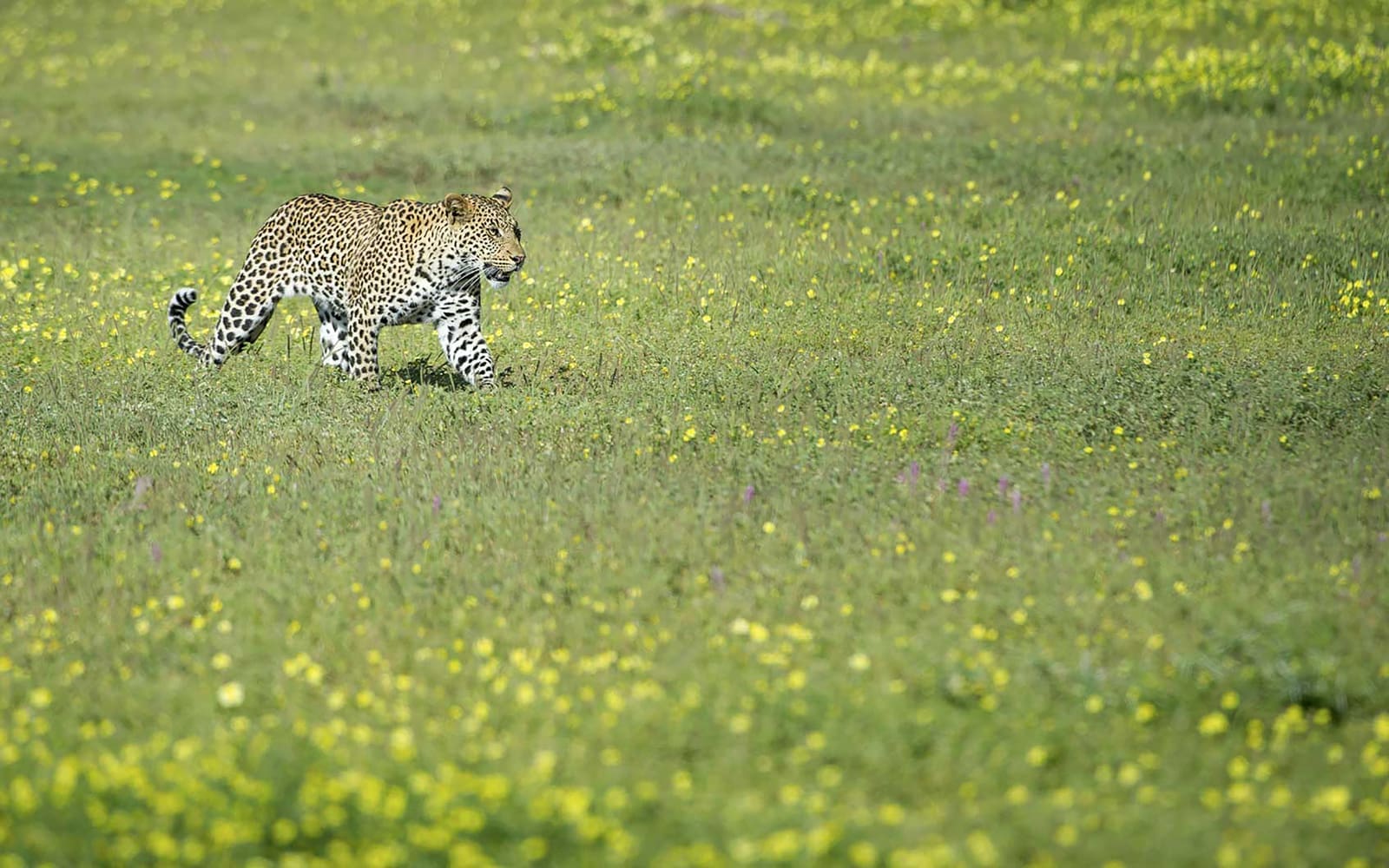
During the months of Jan-Apr, the landscape transforms into a verdant green – and the game viewing remains superb!
DAVID: Photographers flock to Mashatu January-April each year. Why? Because even after the rains, the grass remains very short. This enables them to achieve high “photographic hit-rate,” especially predators! This is not the case in several safari destinations, such as Kenya, Tanzania, northern Botswana, Zimbabwe and Zambia.
We only have 29 days of rain per year. Essentially, we don’t have a green season, but rather a “yellow season.” During this time of year, our plains are covered with beautiful yellow flowers. Thus, we would consider Mashatu to be a ‘year-round’ destination.
KELLY: Imagine the sight of elephants and leopards tripping through fields of yellow flowers; it’s absolutely dreamy and my all-time favorite time of year at Mashatu. Cape Town is also wonderful this time of year; Mashatu then becomes the perfect safari-Cape combination!
What other safari destinations would you recommend to combine with Mashatu?
KELLY: MalaMala Game Reserve next to South Africa’s Kruger National Park combines flying packages with Mashatu making for a safari experience in Kruger complimented by the unique adrenaline safari attributes of Mashatu. The Amalinda properties in Zimbabwe; another family-owned and run operation where you will feel the personal touch on safari. Otherwise combining us with the Okavango Delta is another special itinerary, where the activities, landscapes, camps and game viewing is completely different.
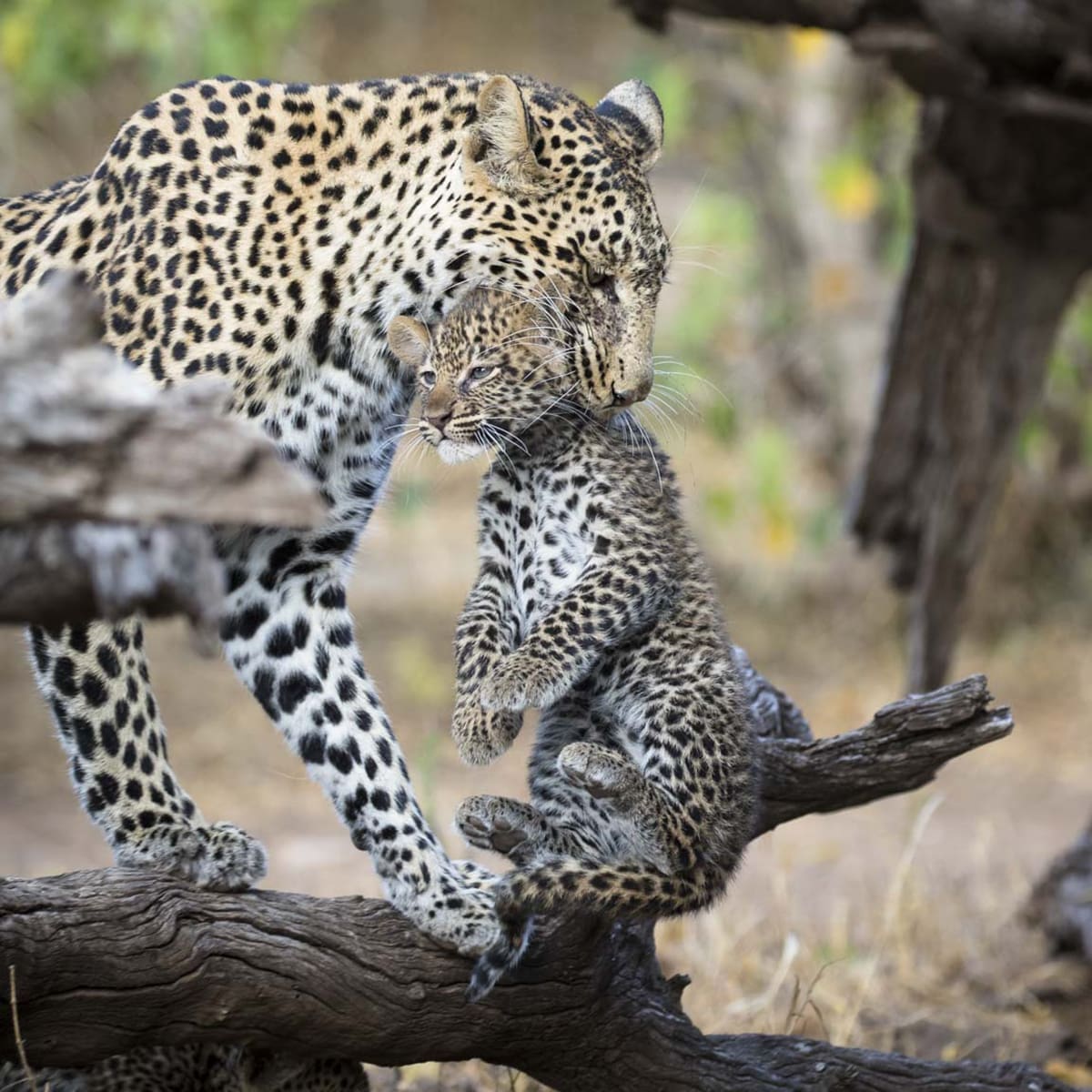
MalaMala is another great destination to see leopards
Mashatu: Featured Itineraries
12-Day | Active Wildlife Safari of Southern Africa
12-Day | “Big Five” Safari to Southern Africa

